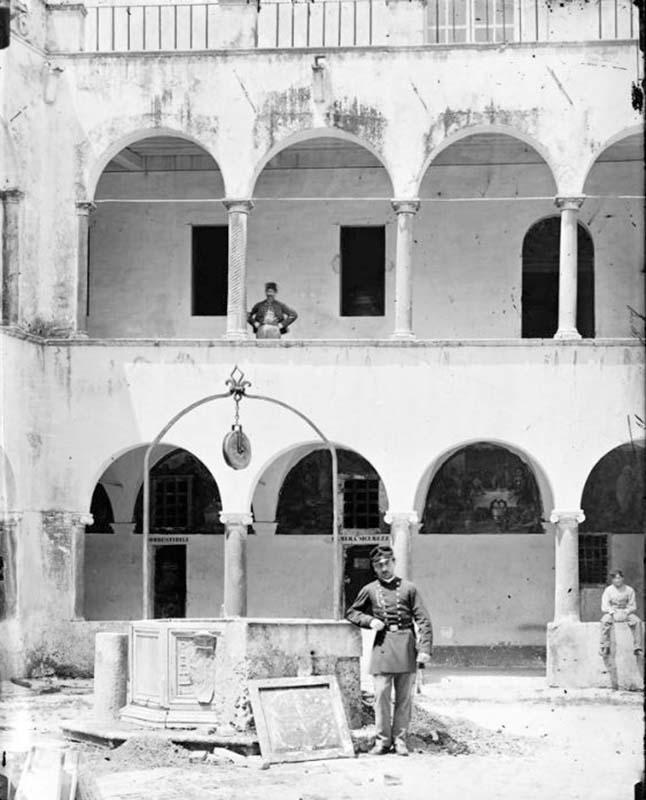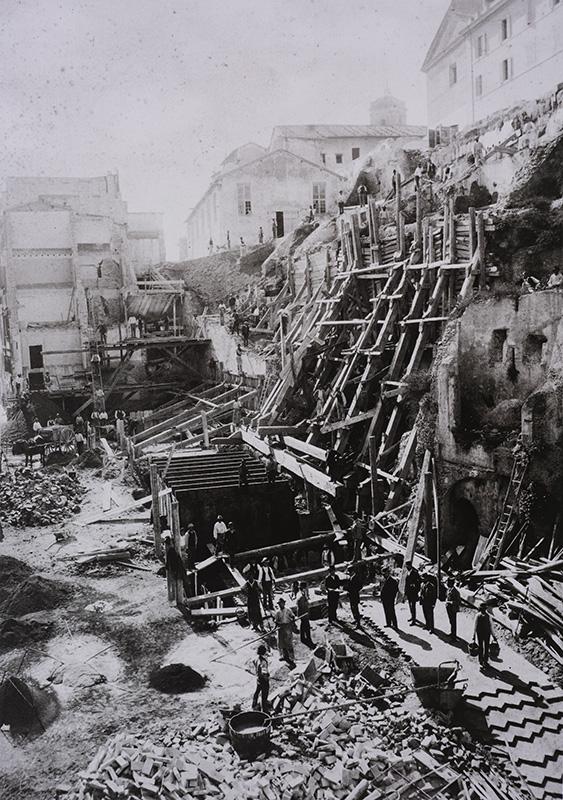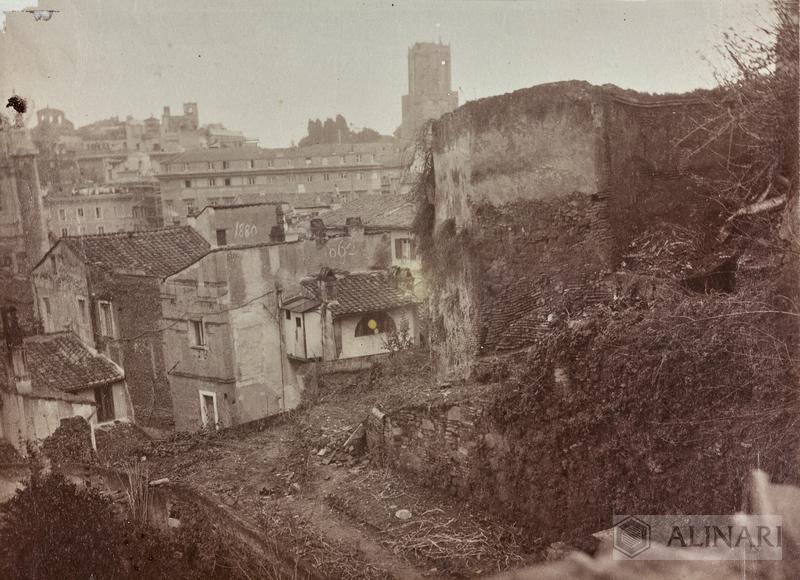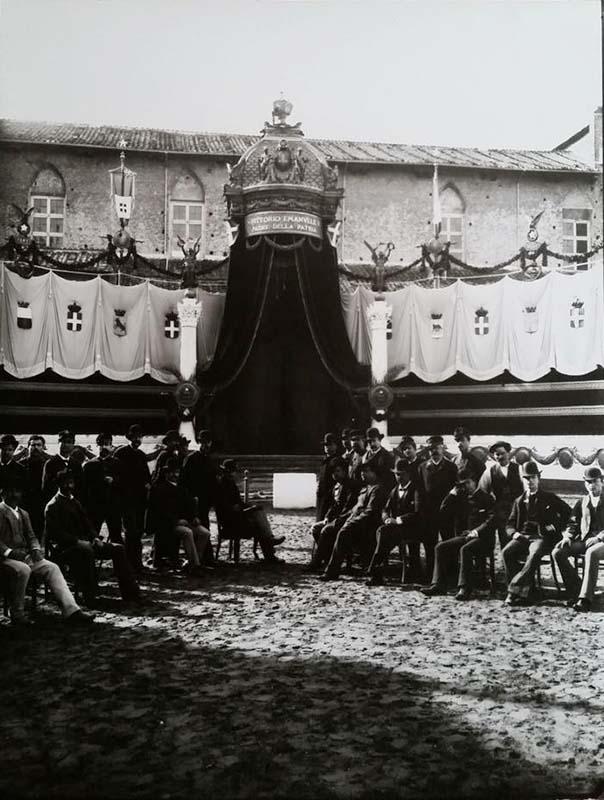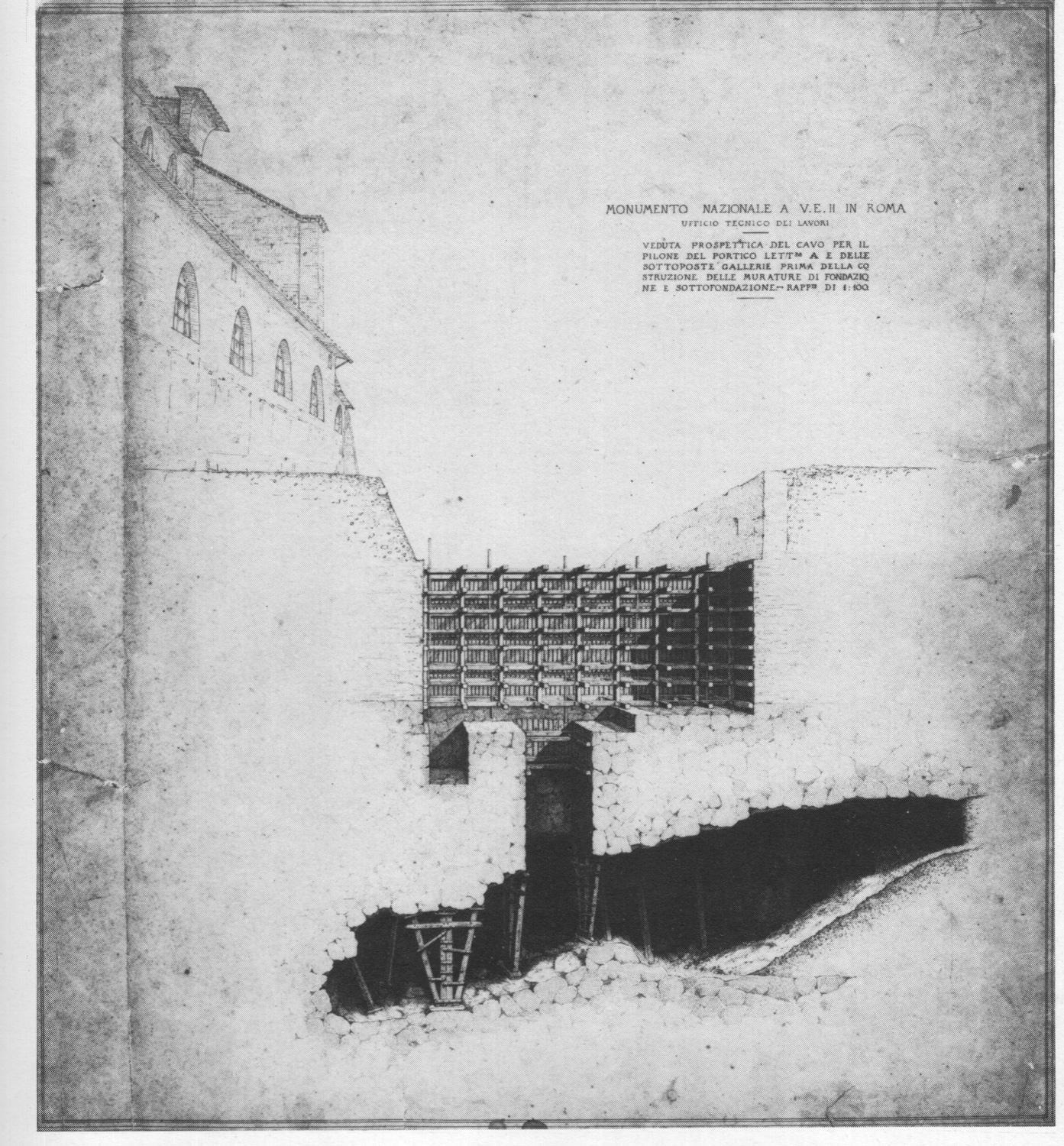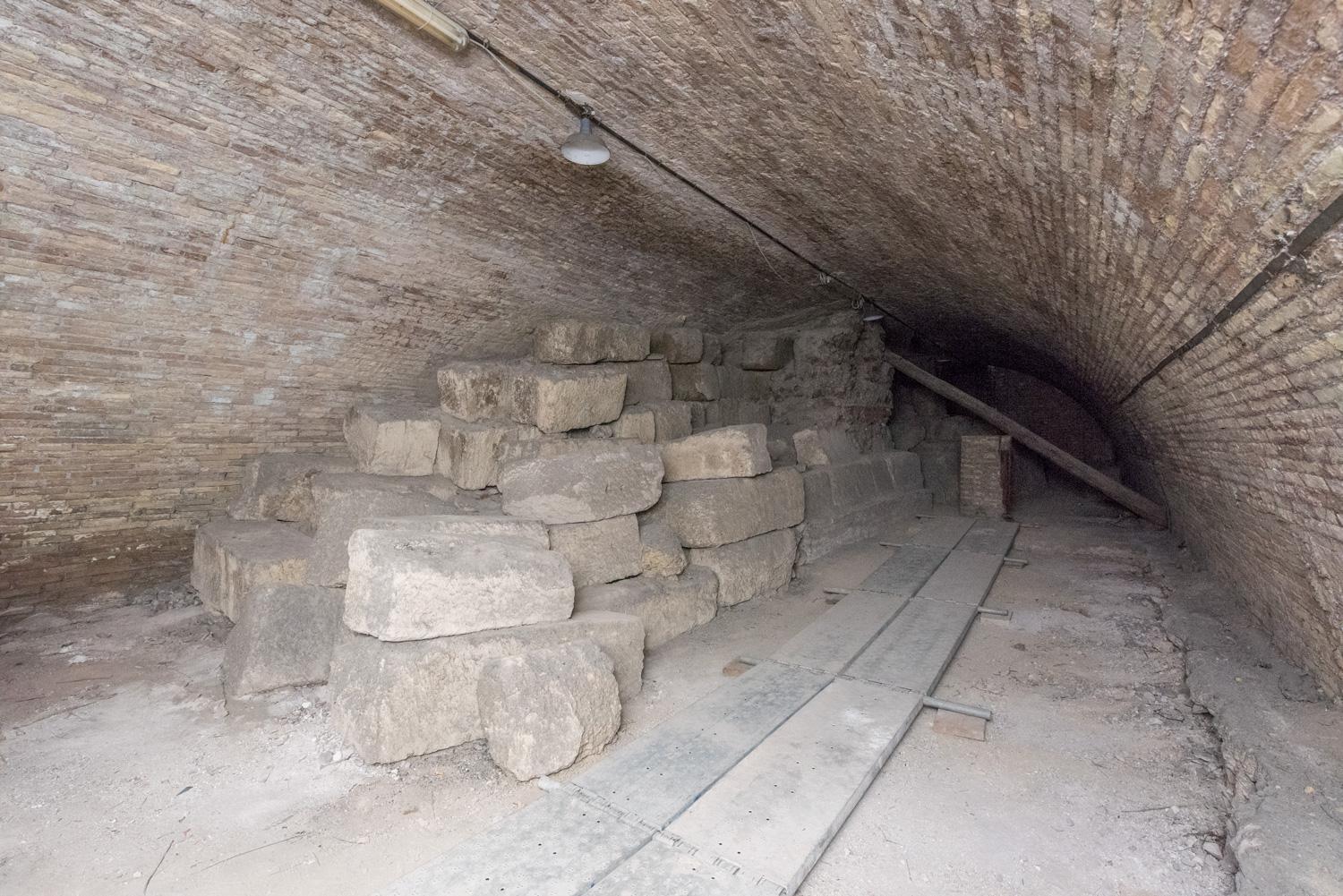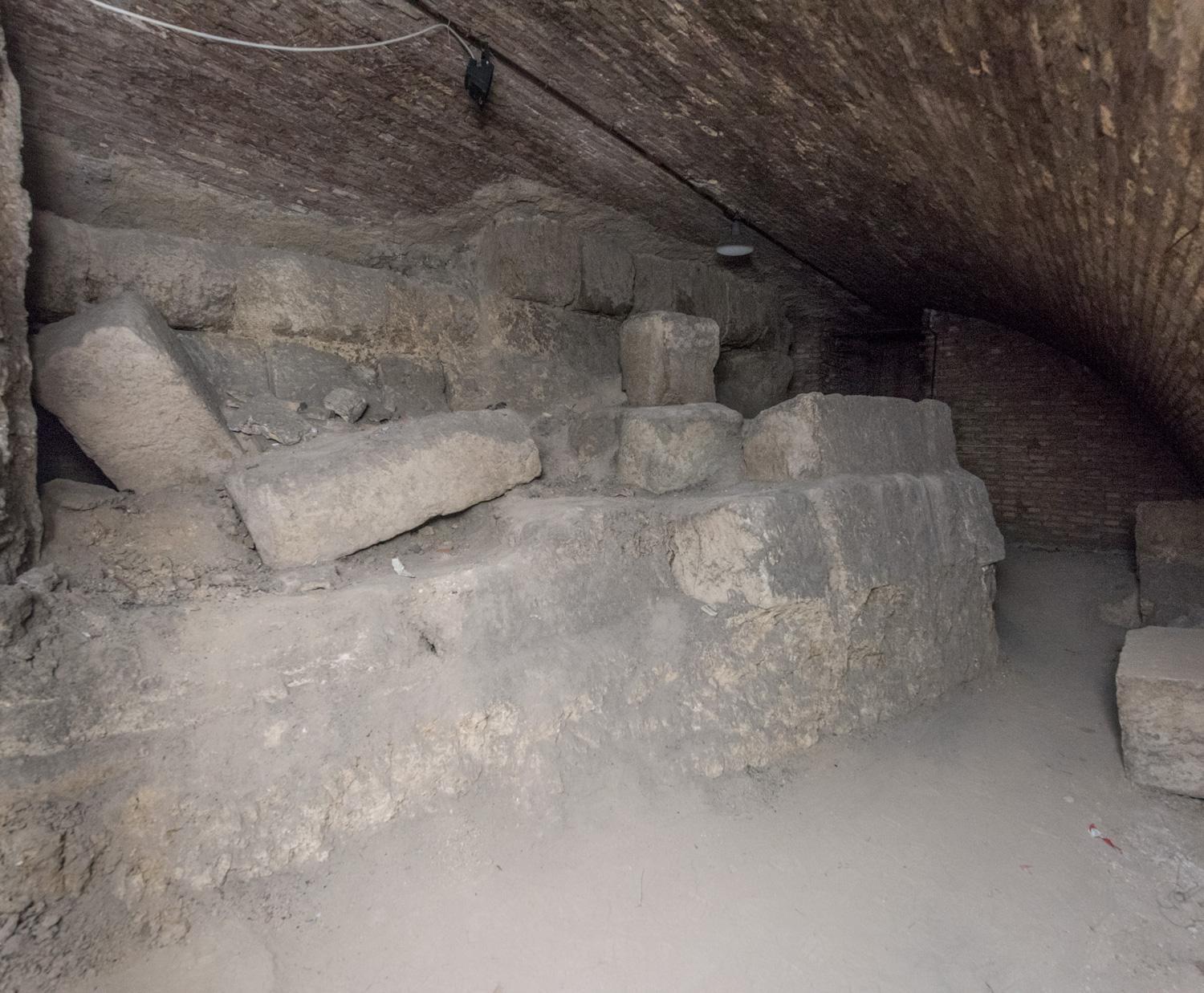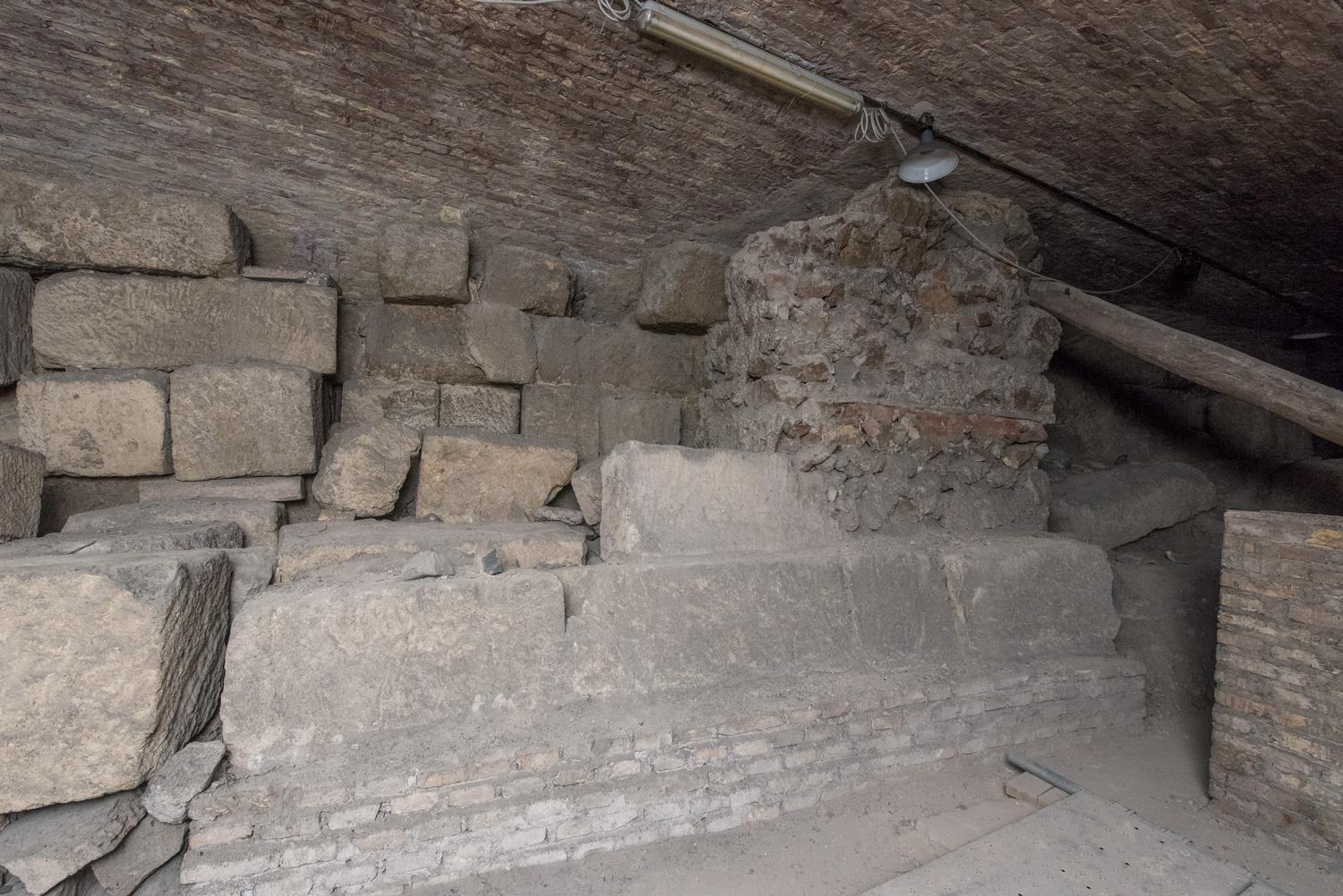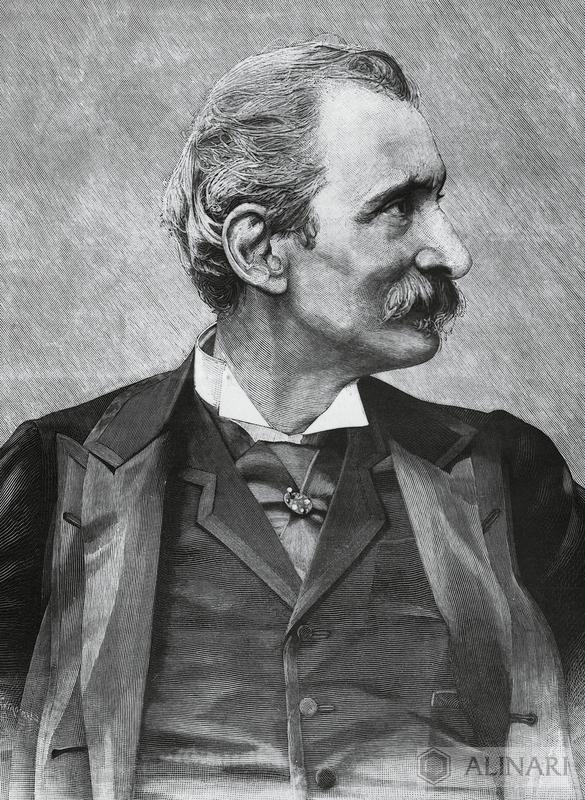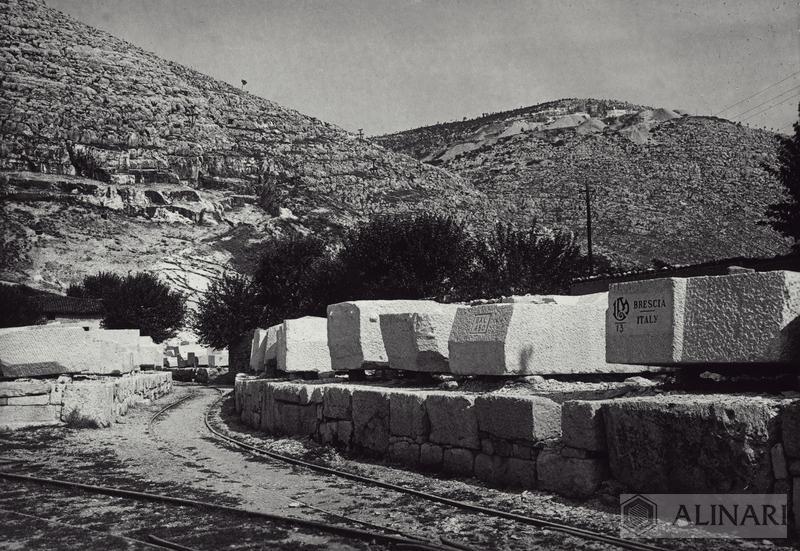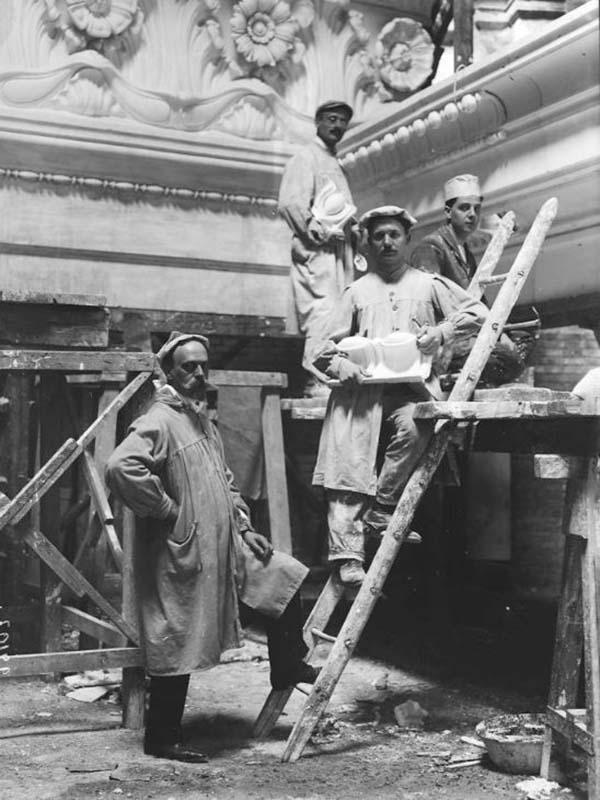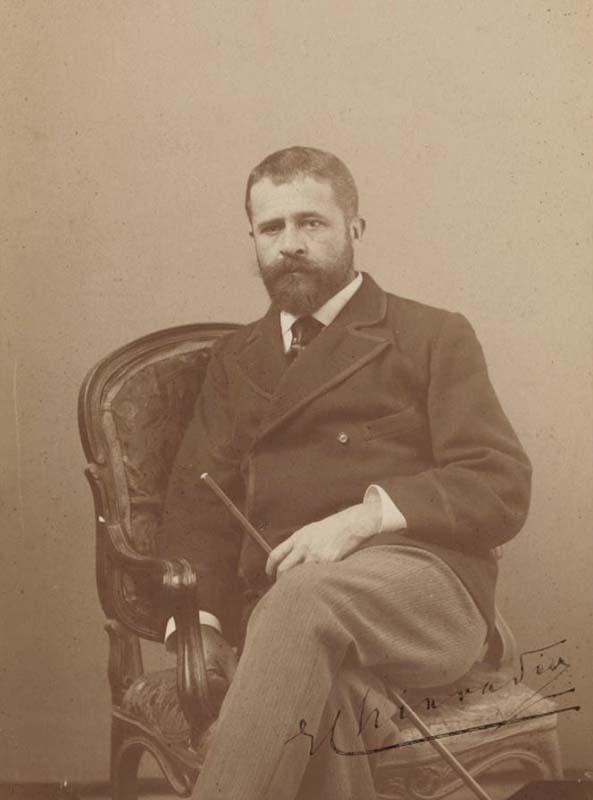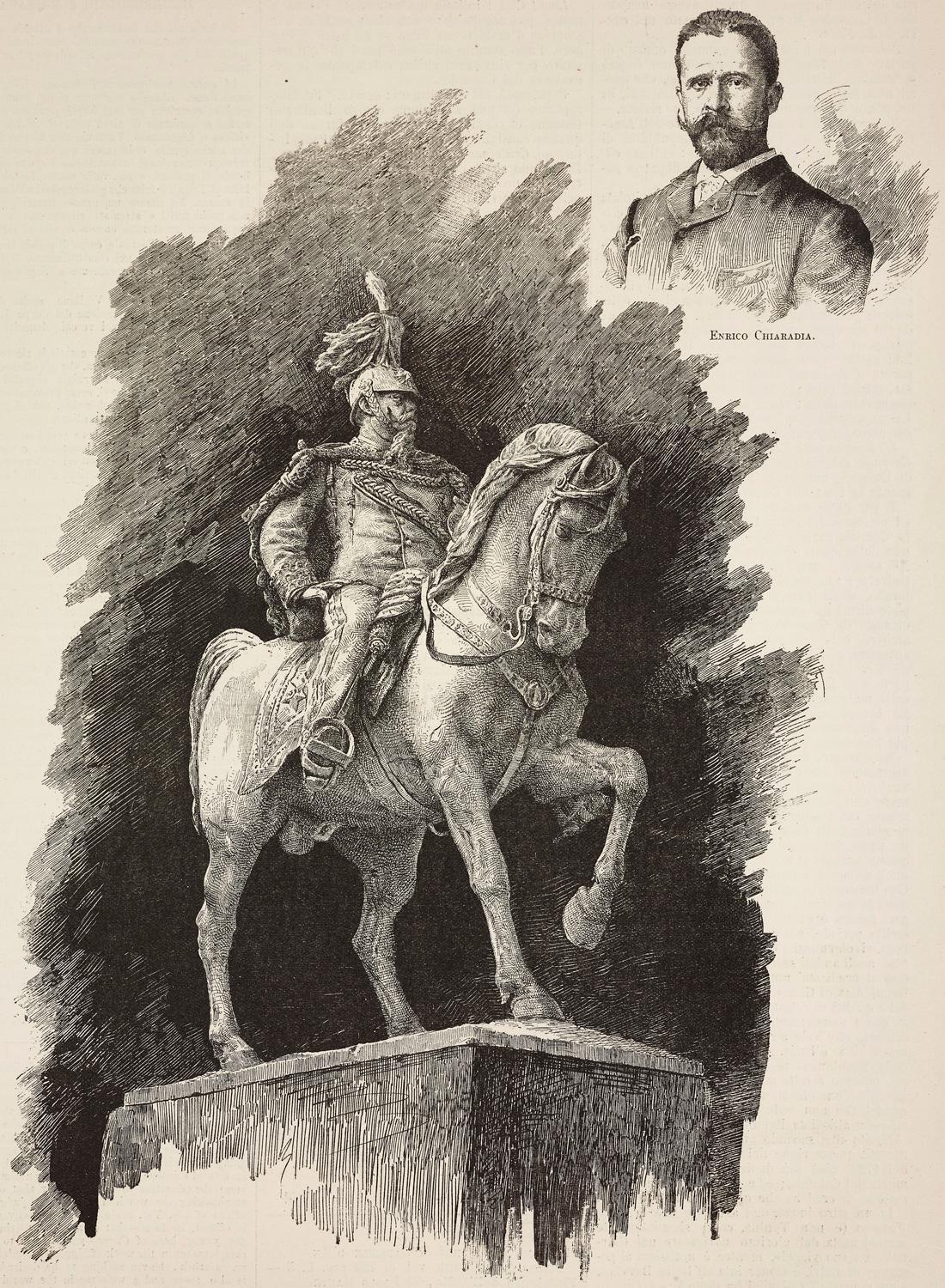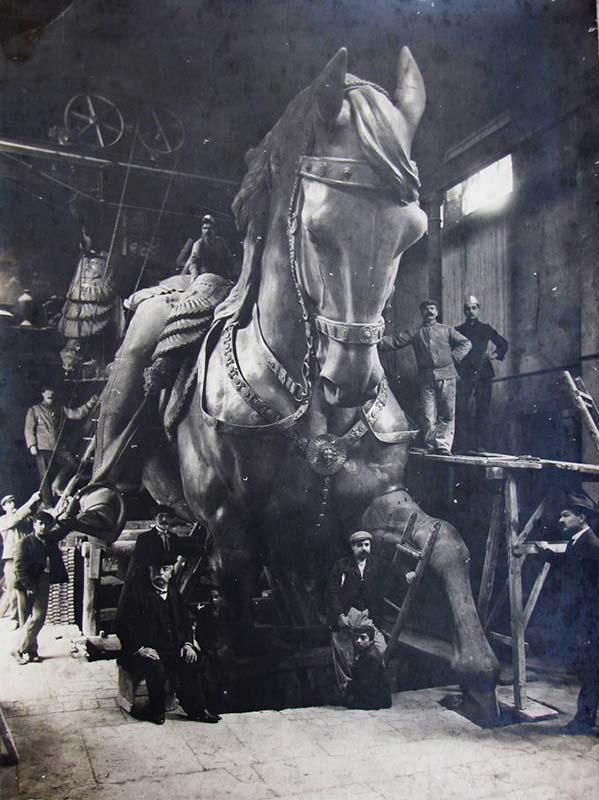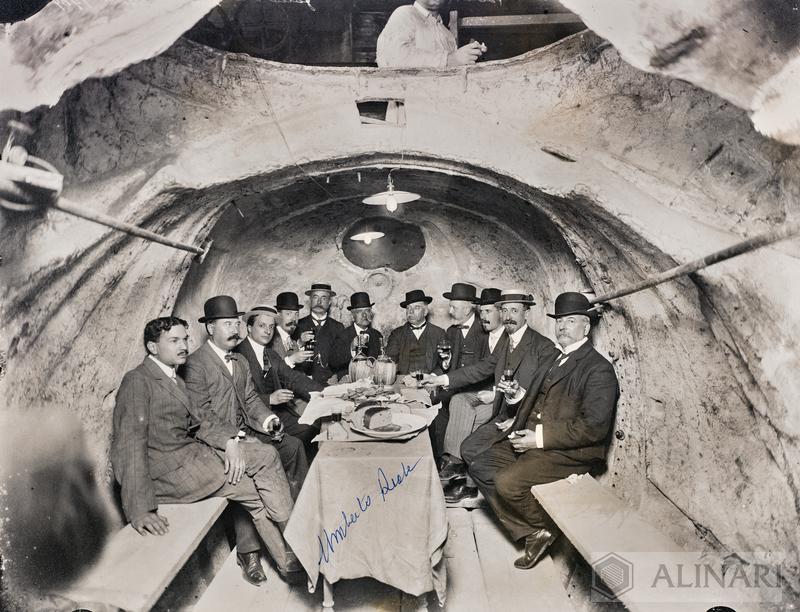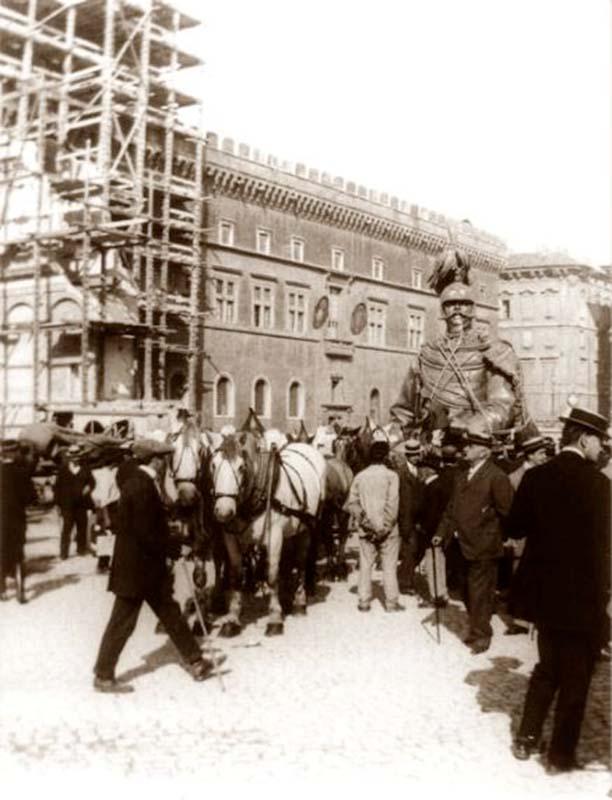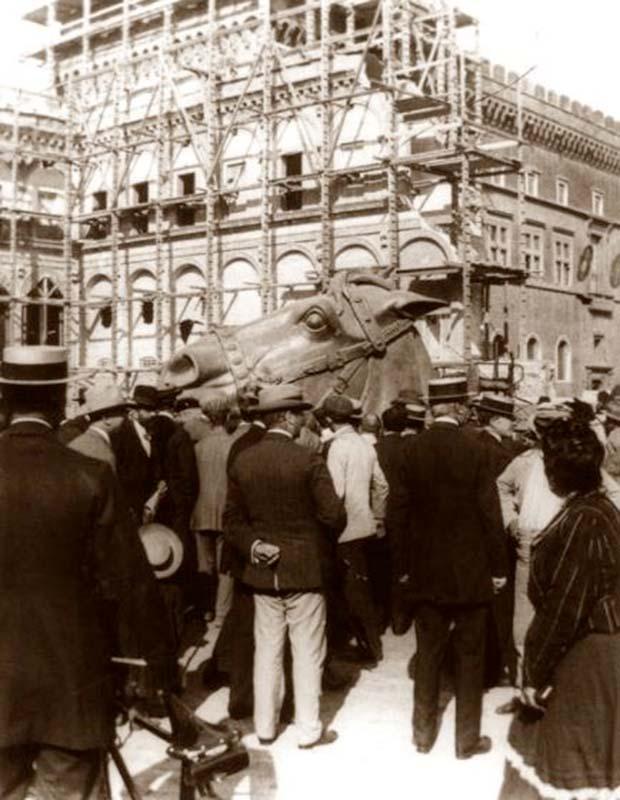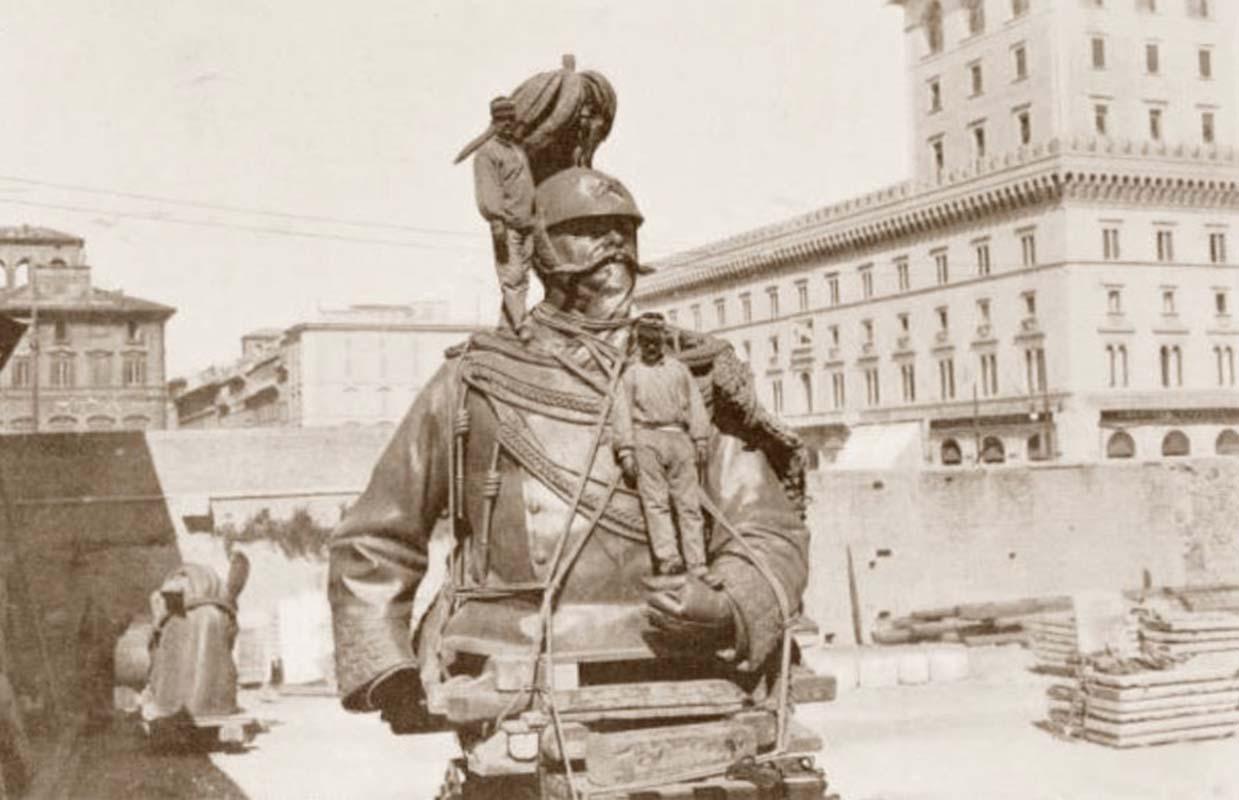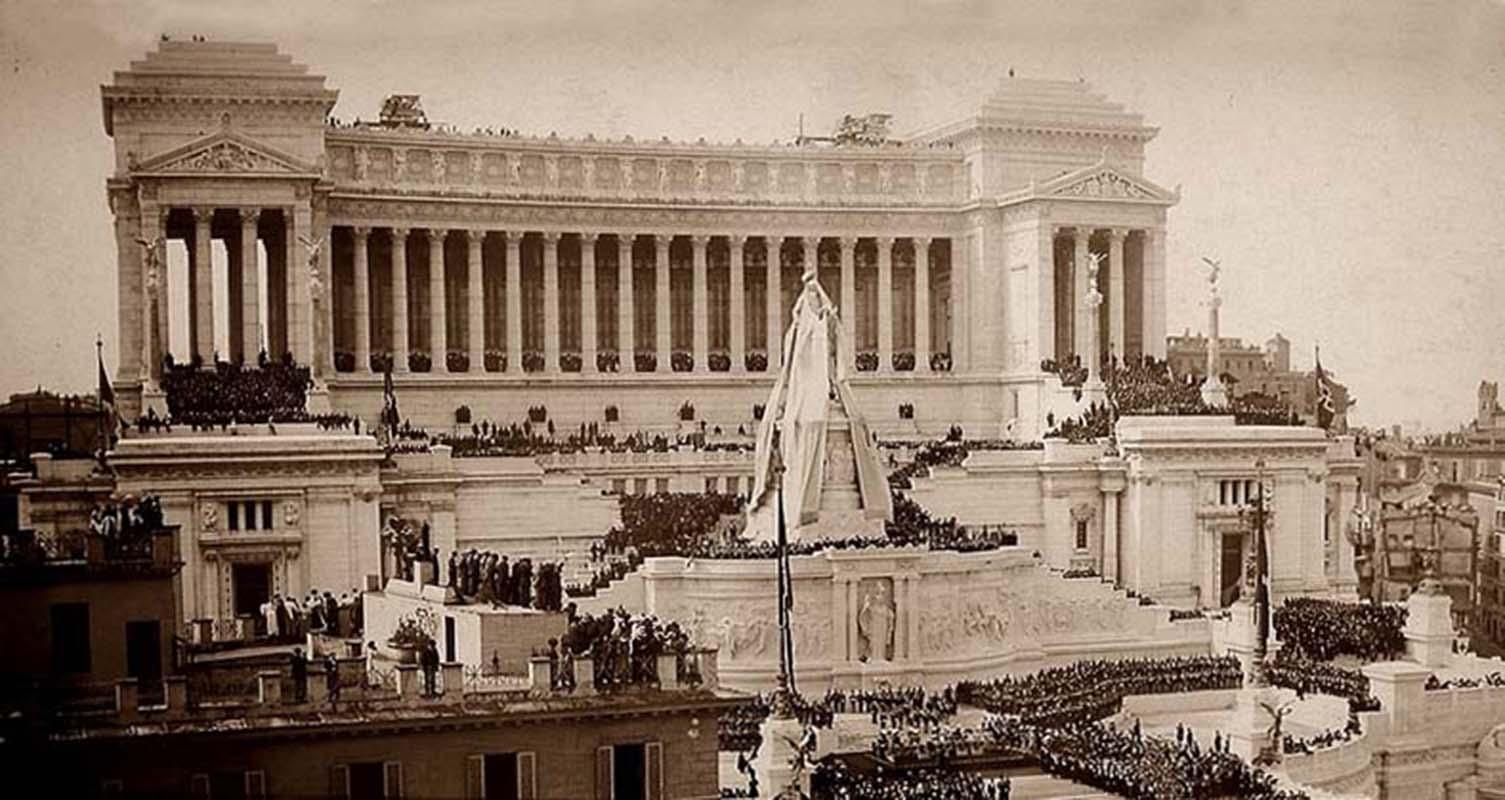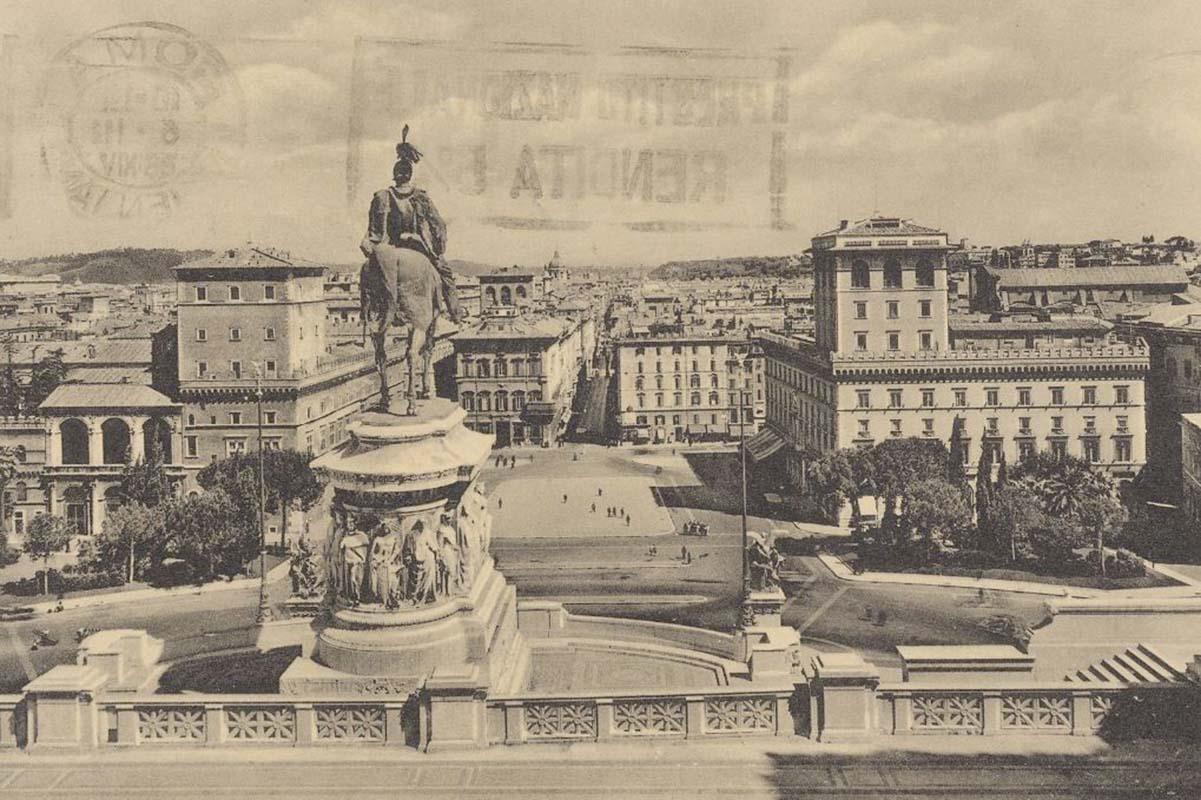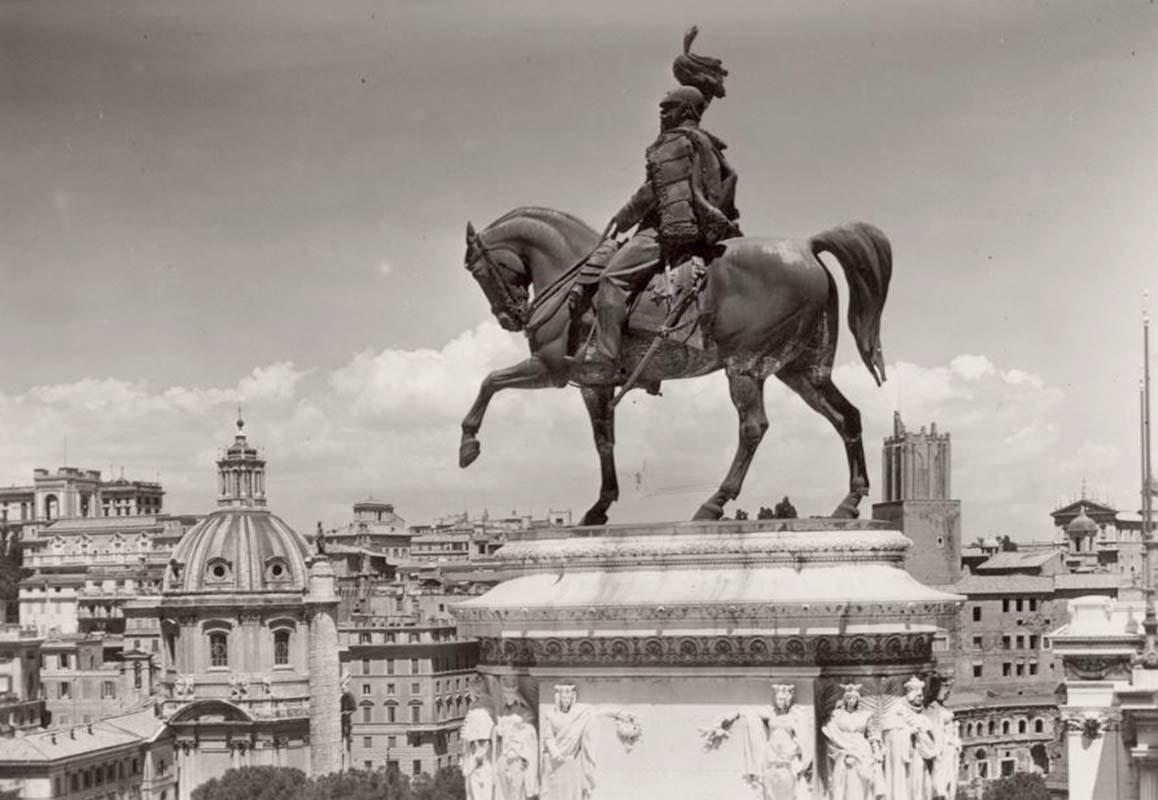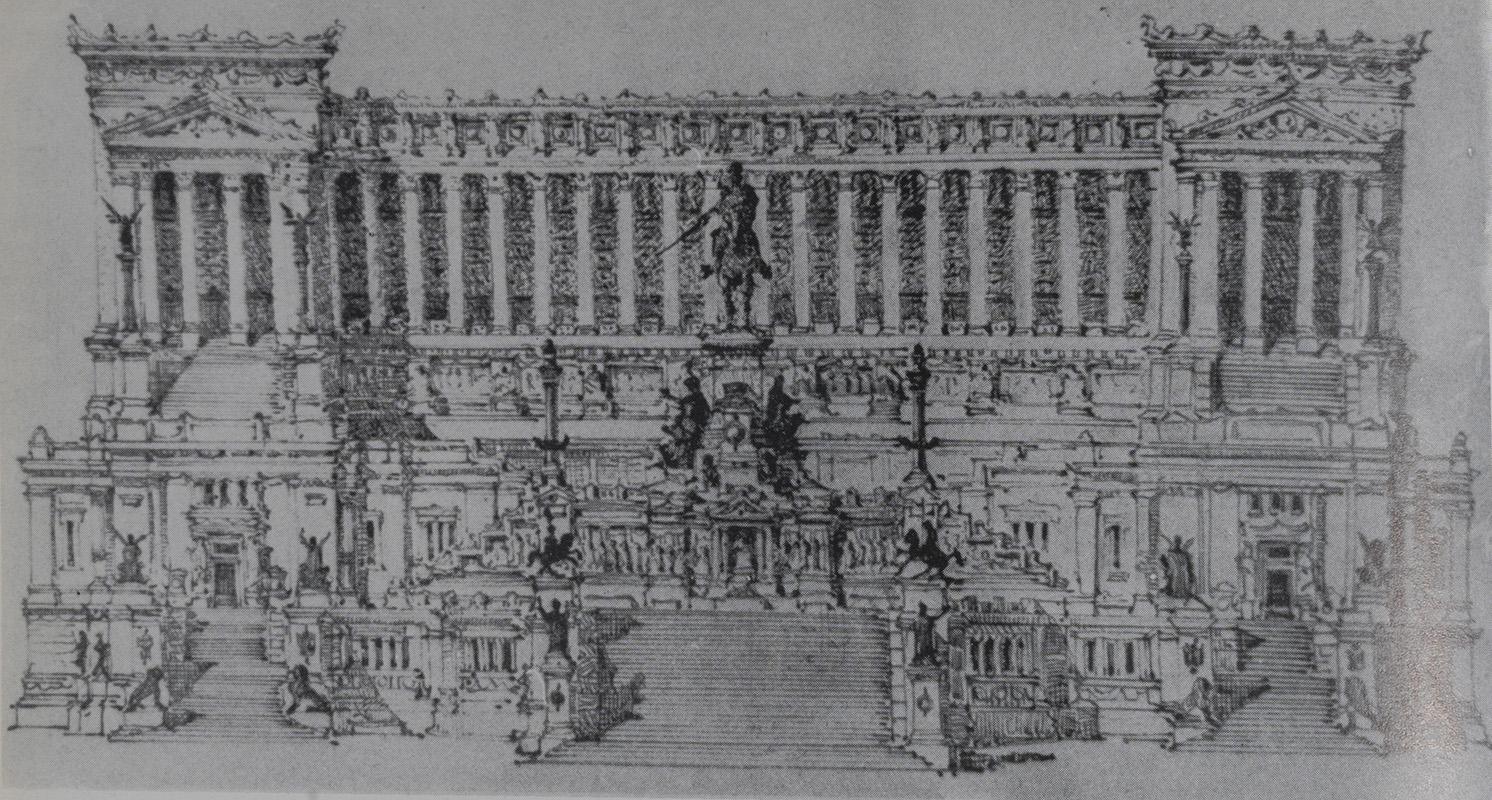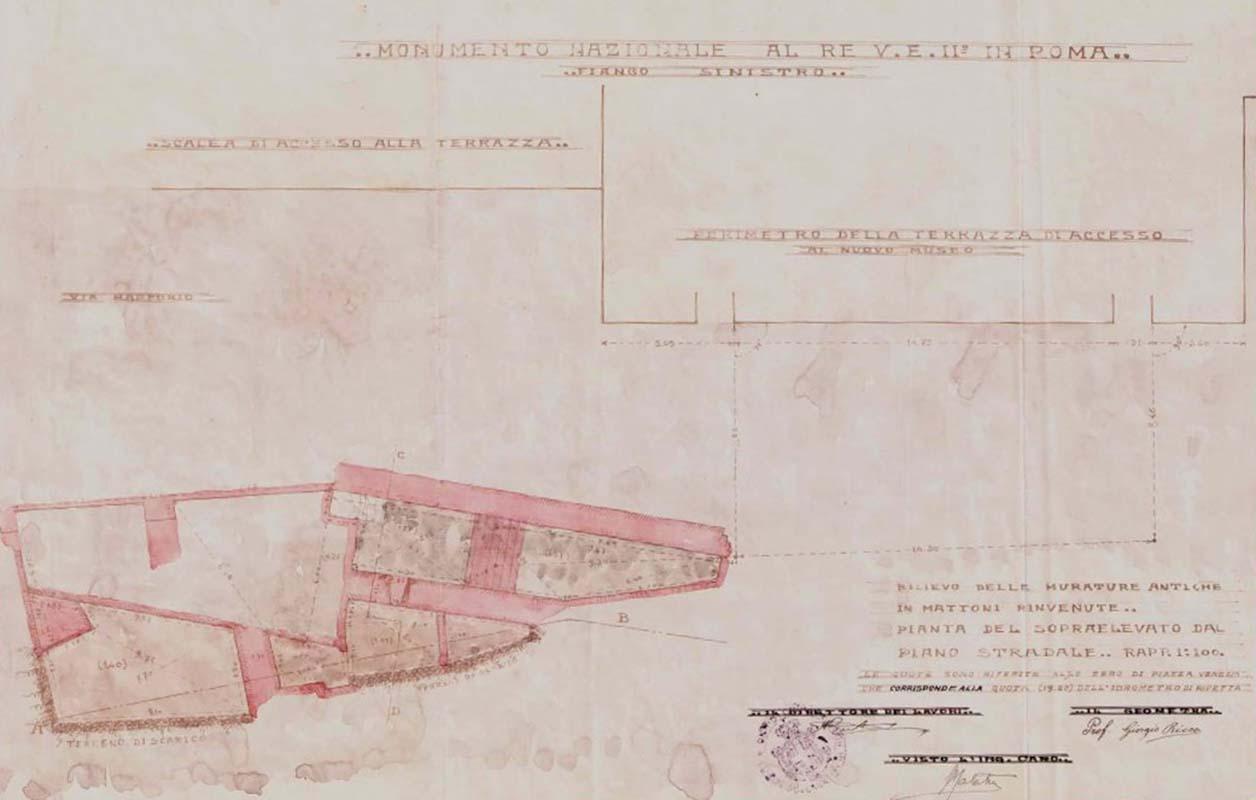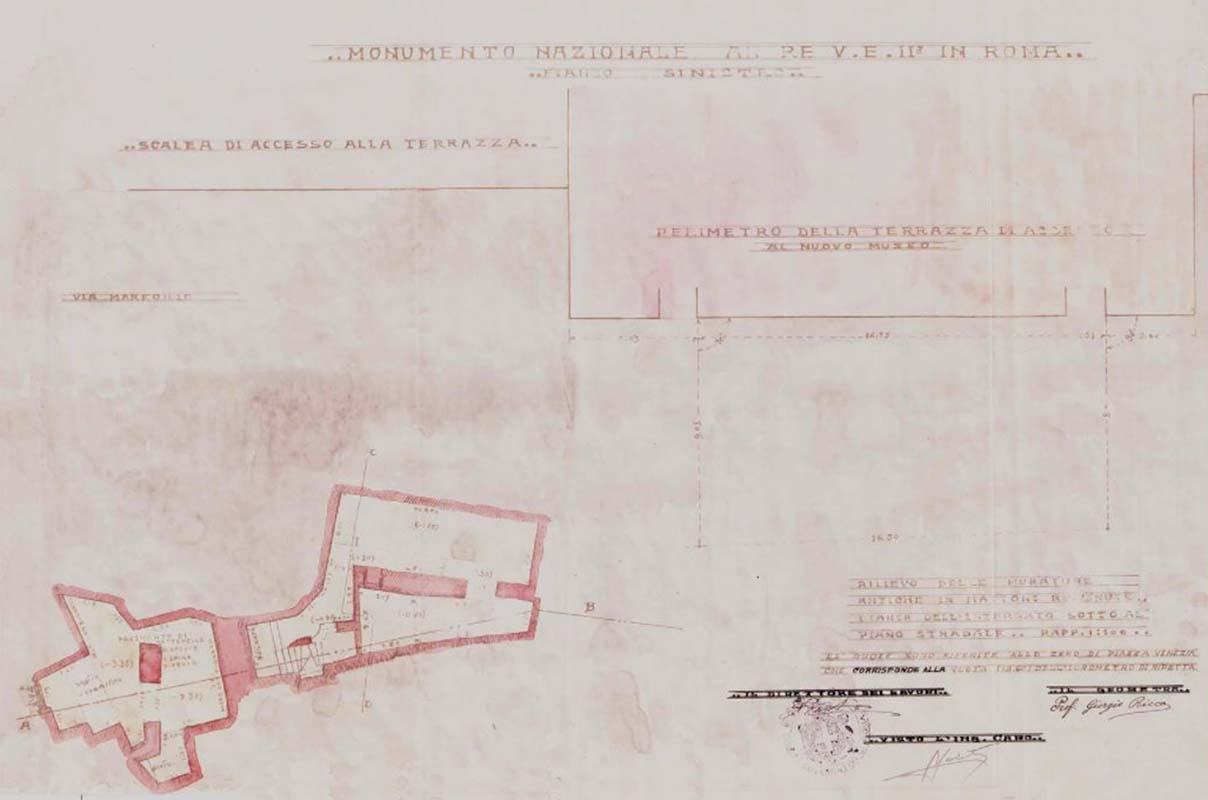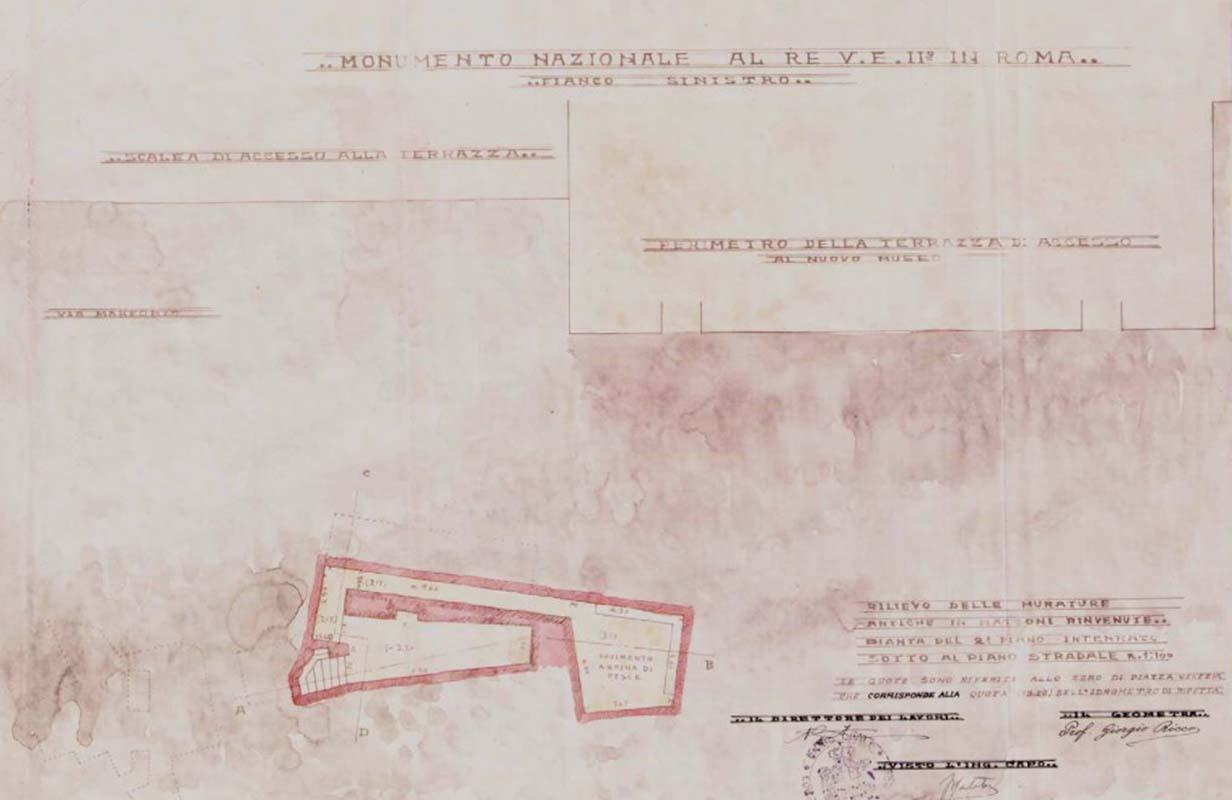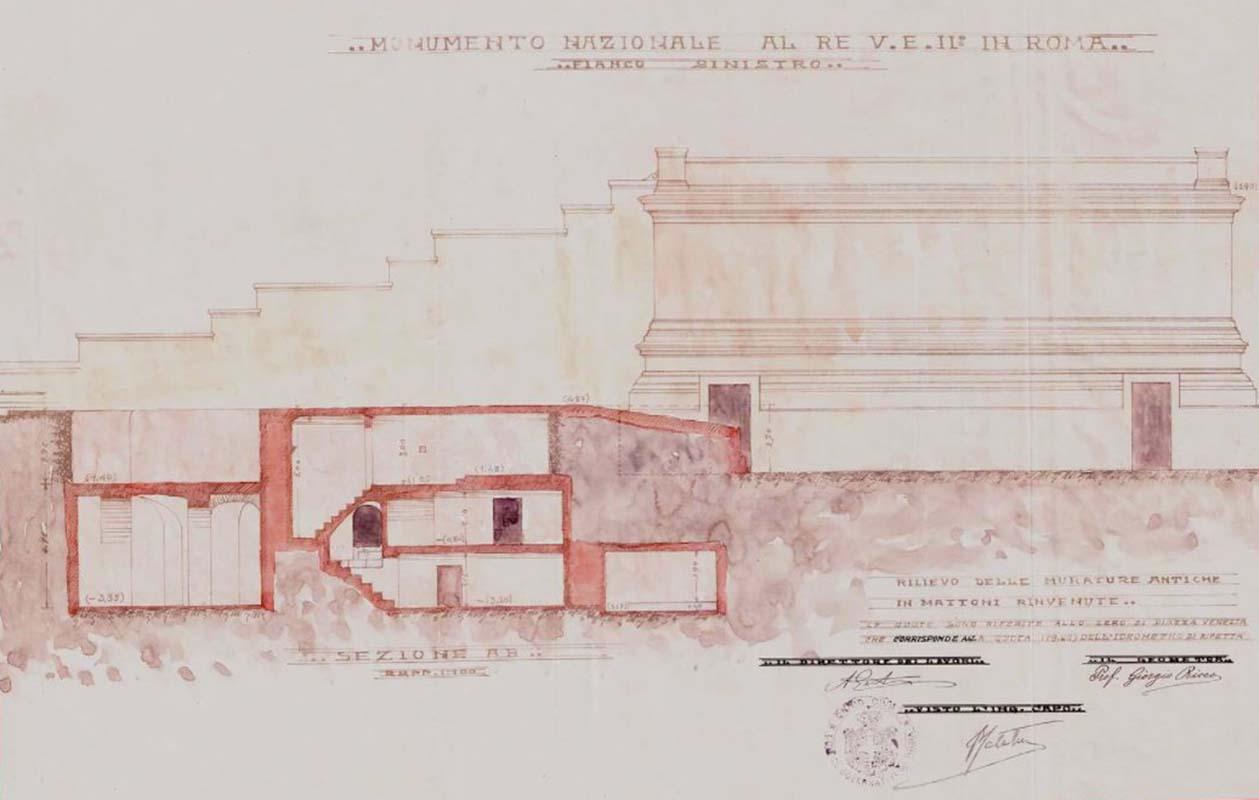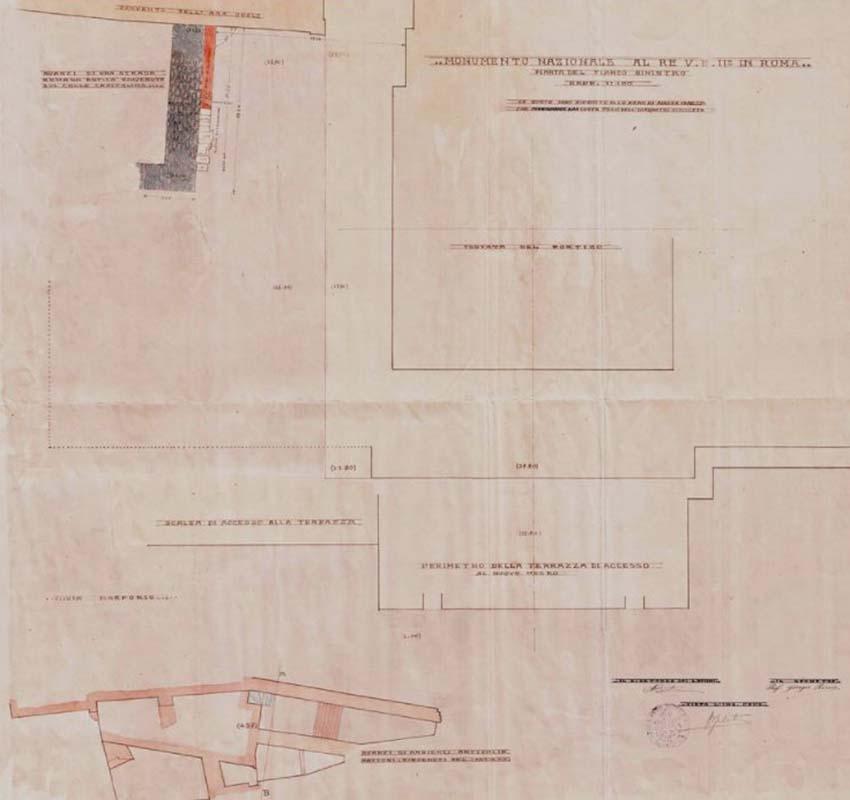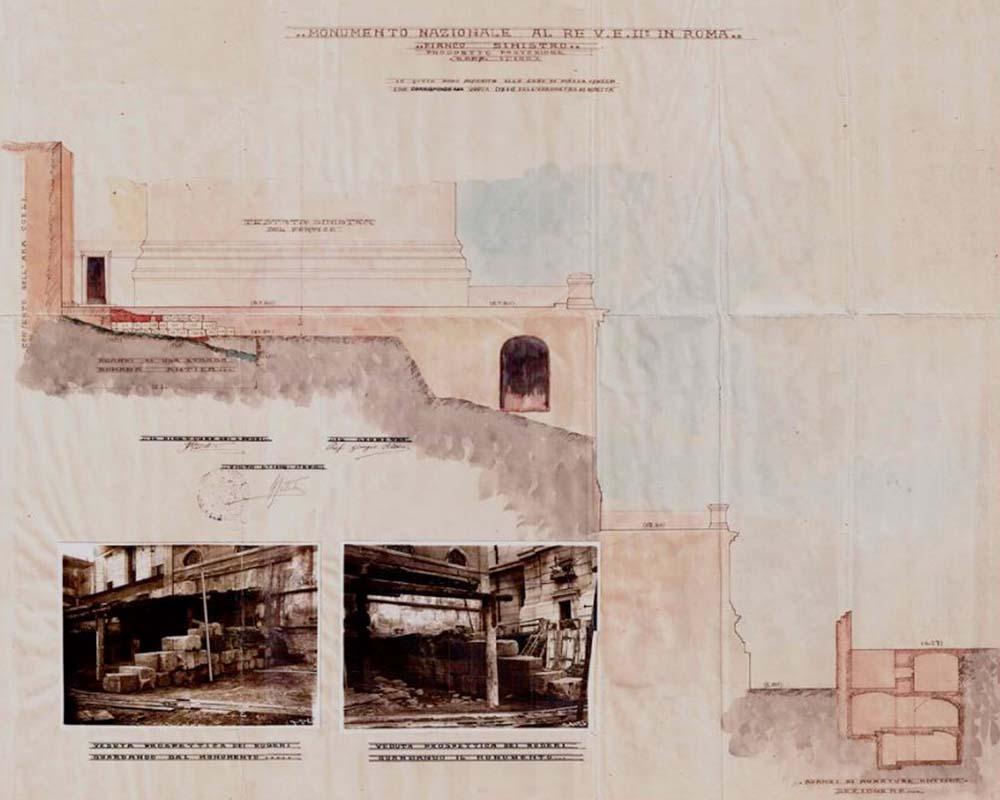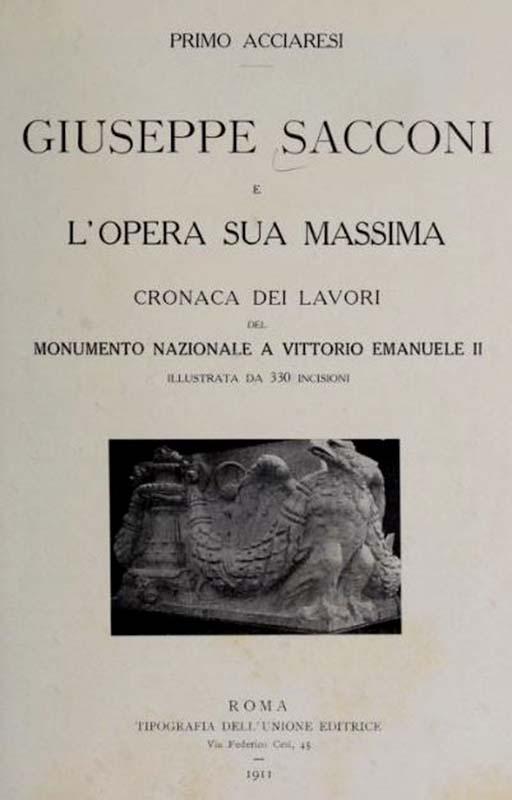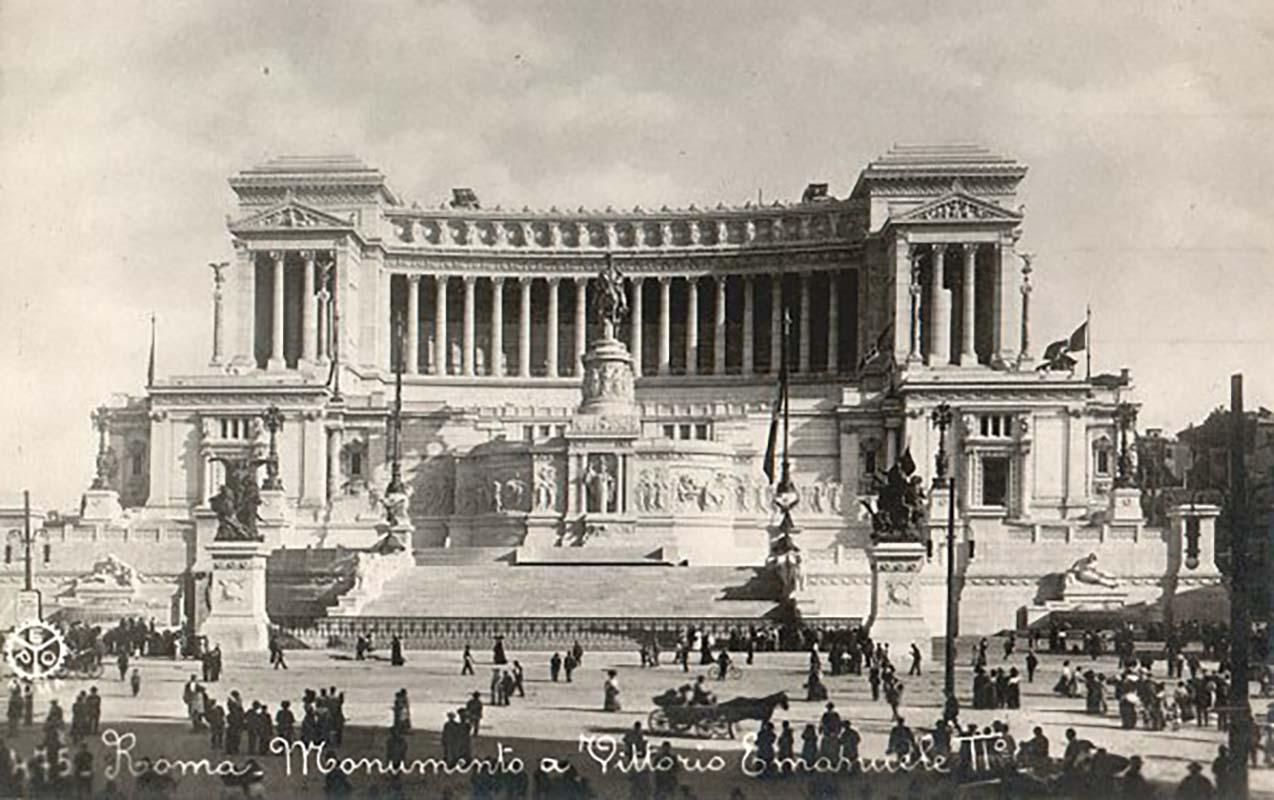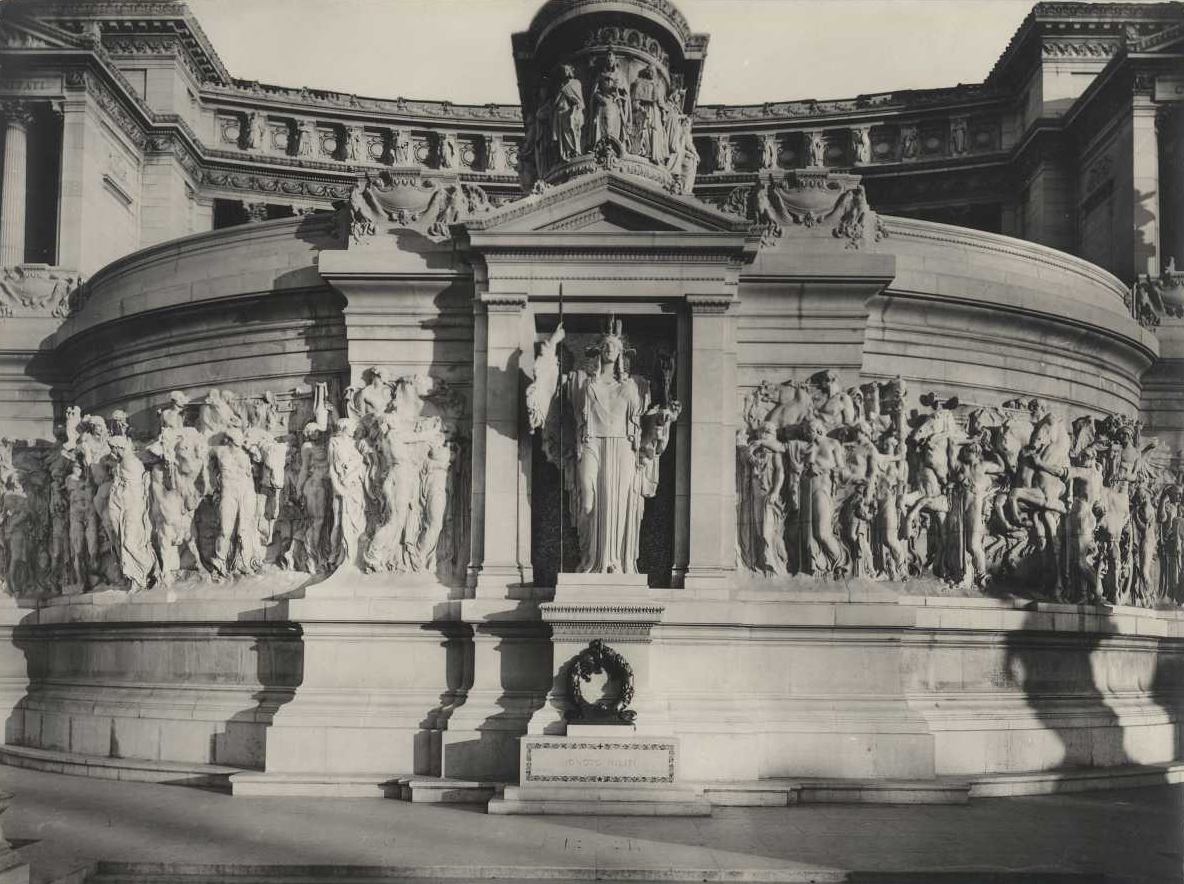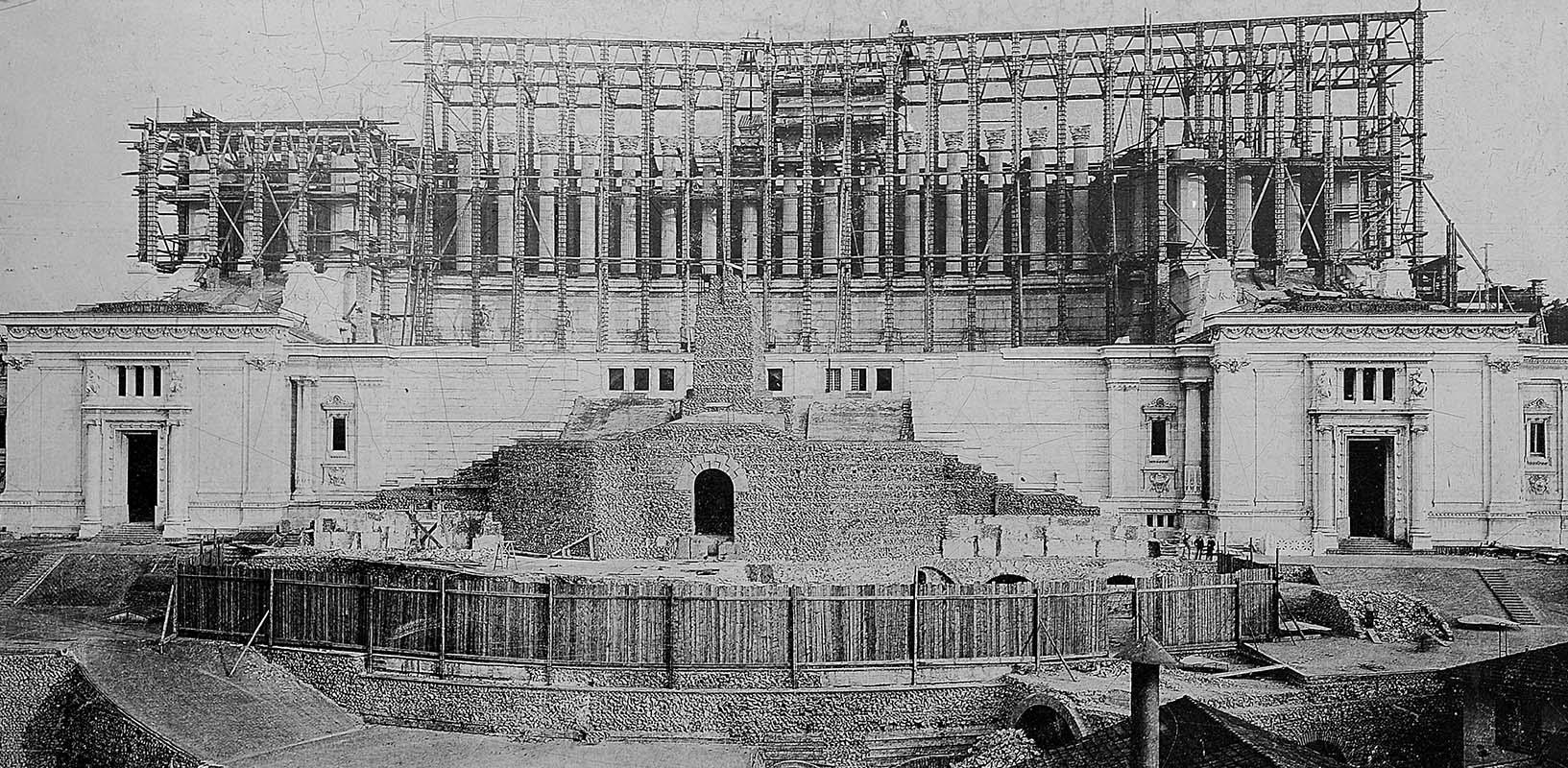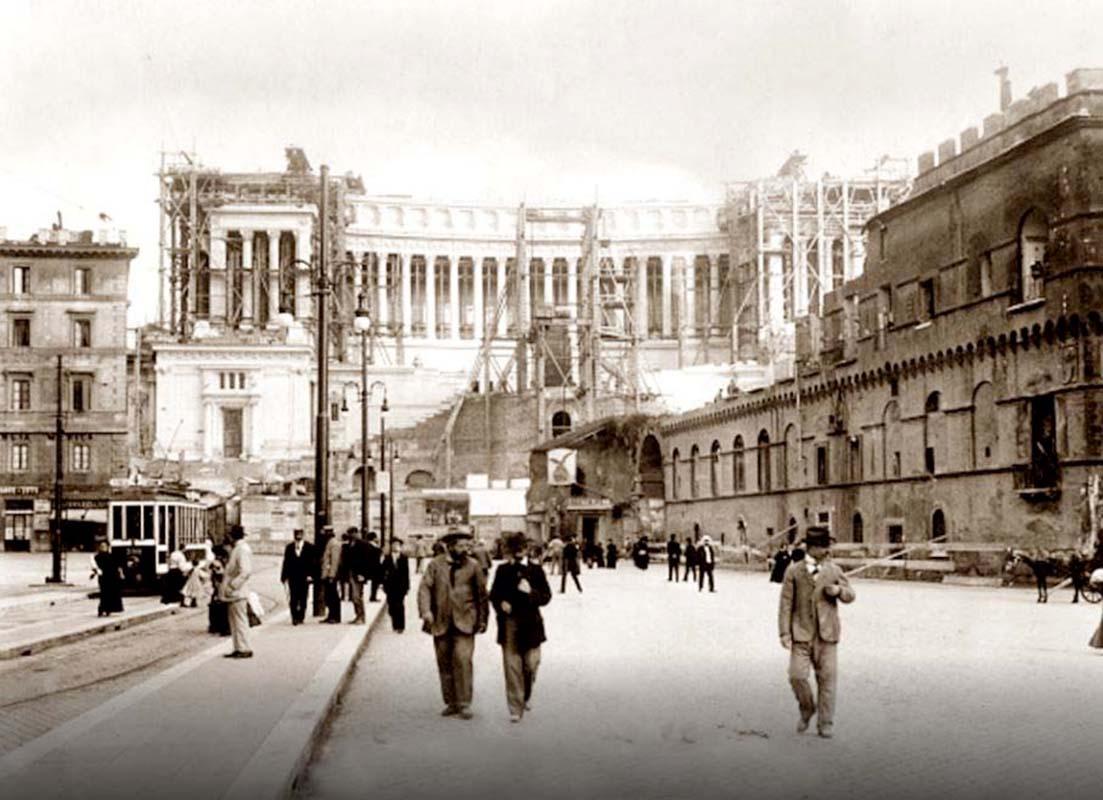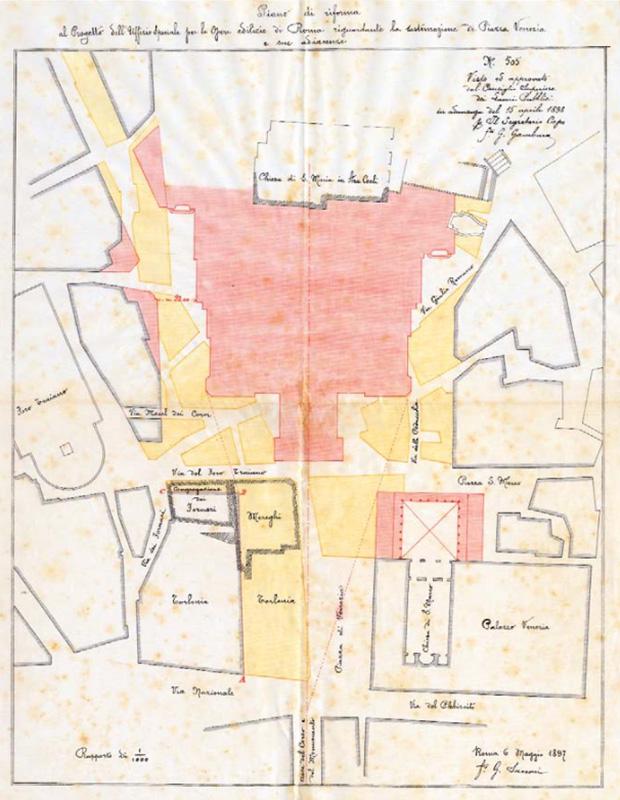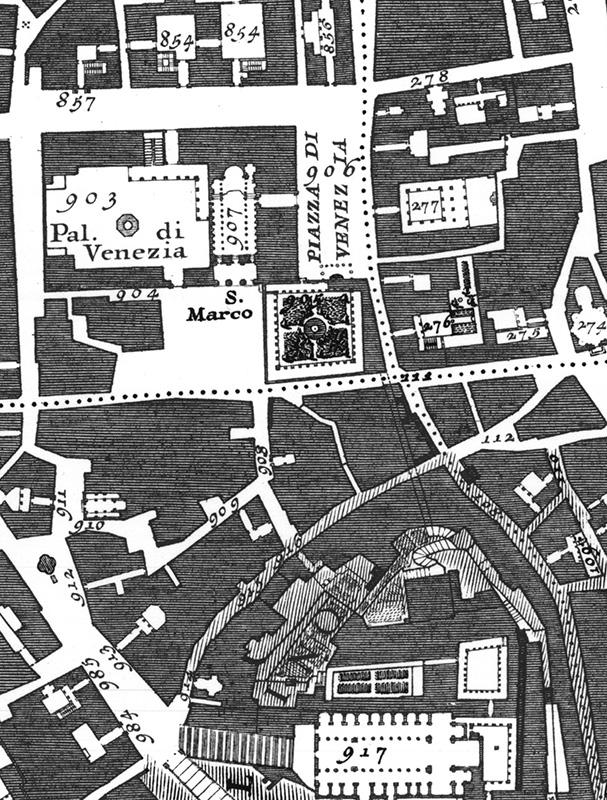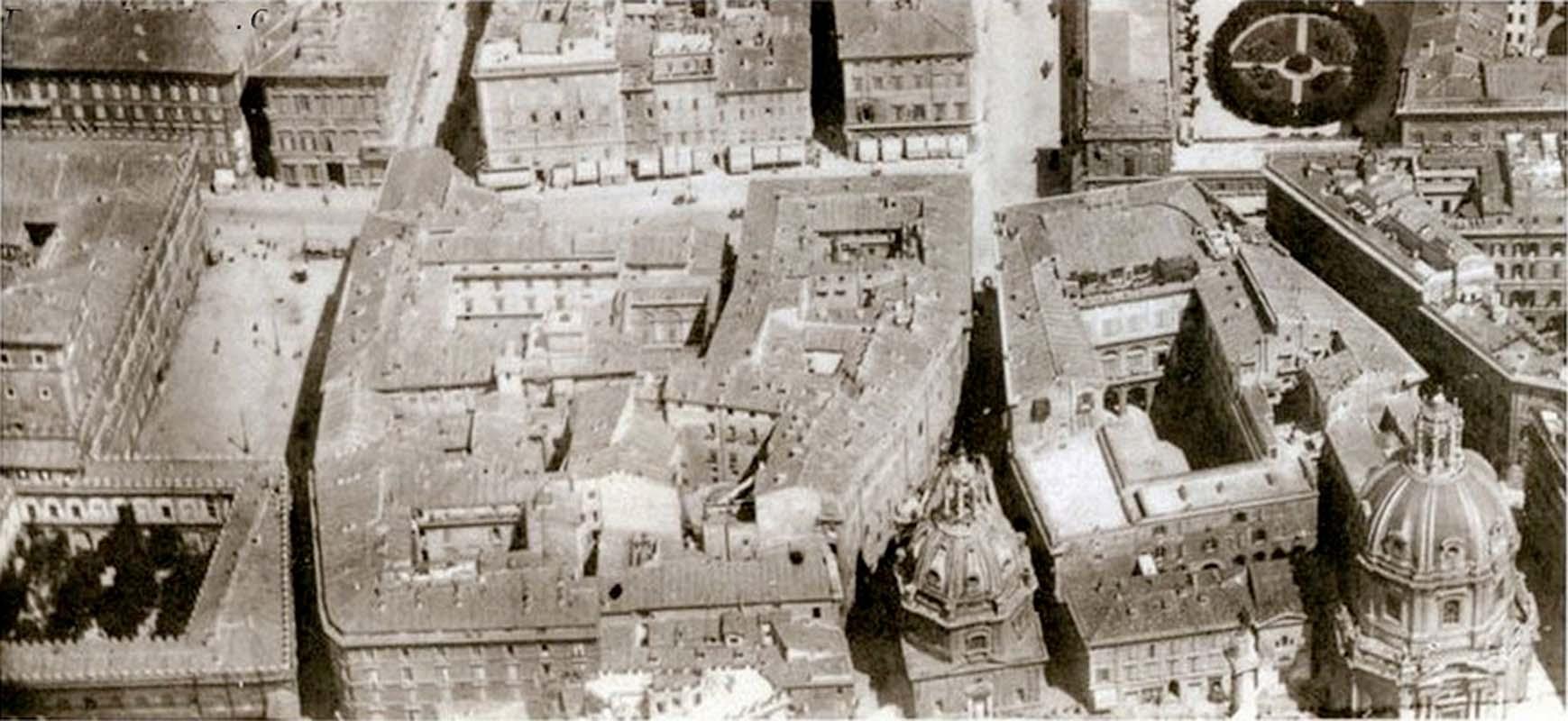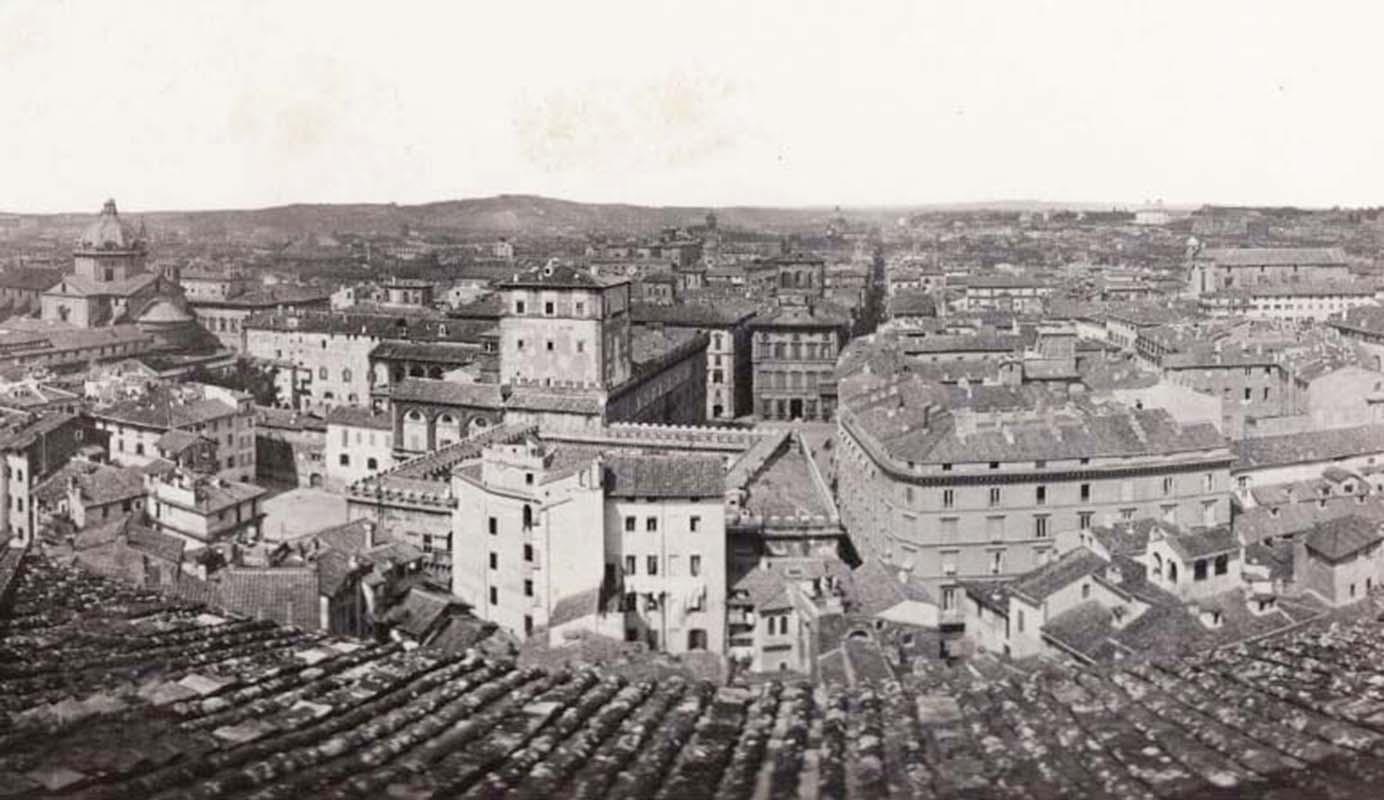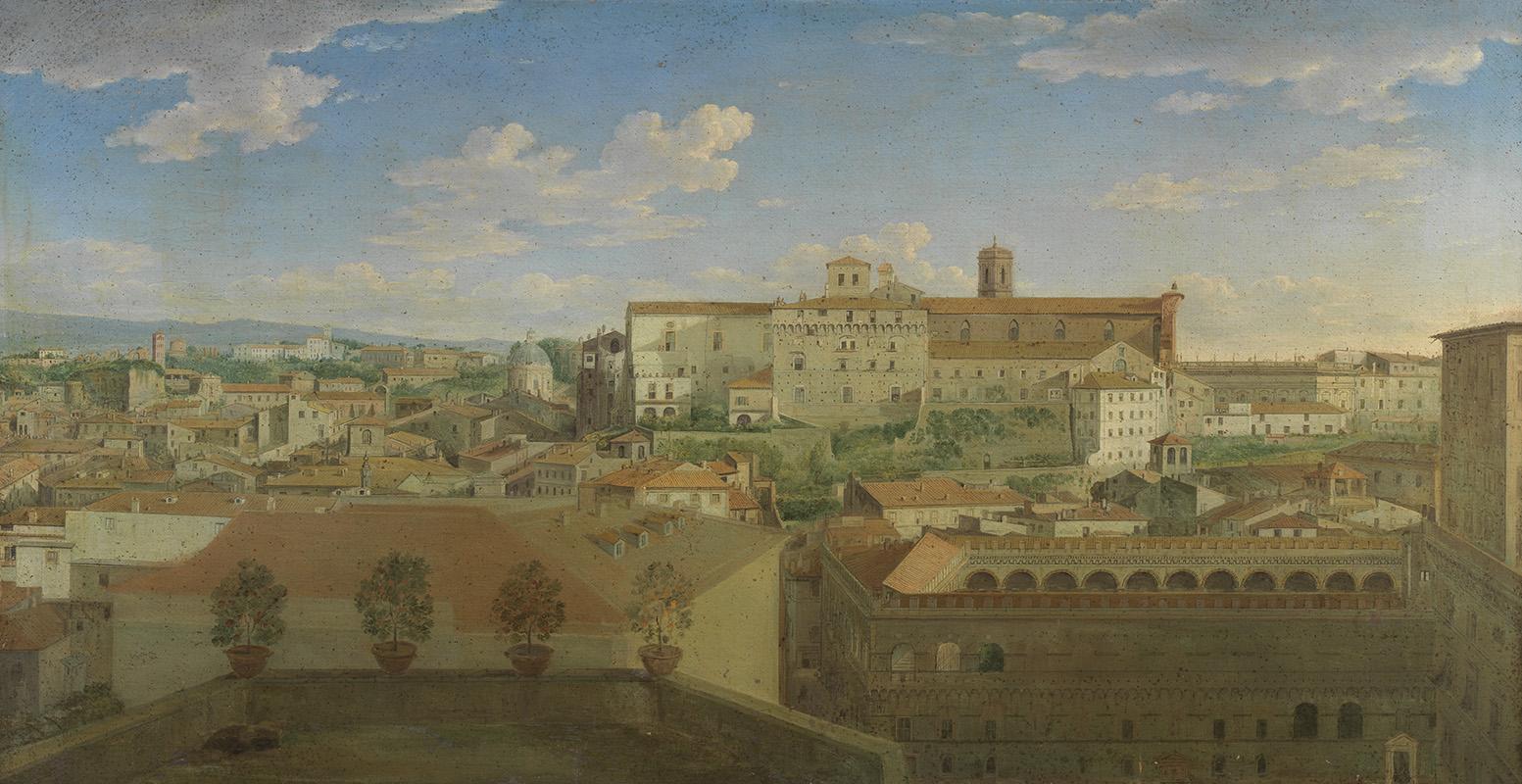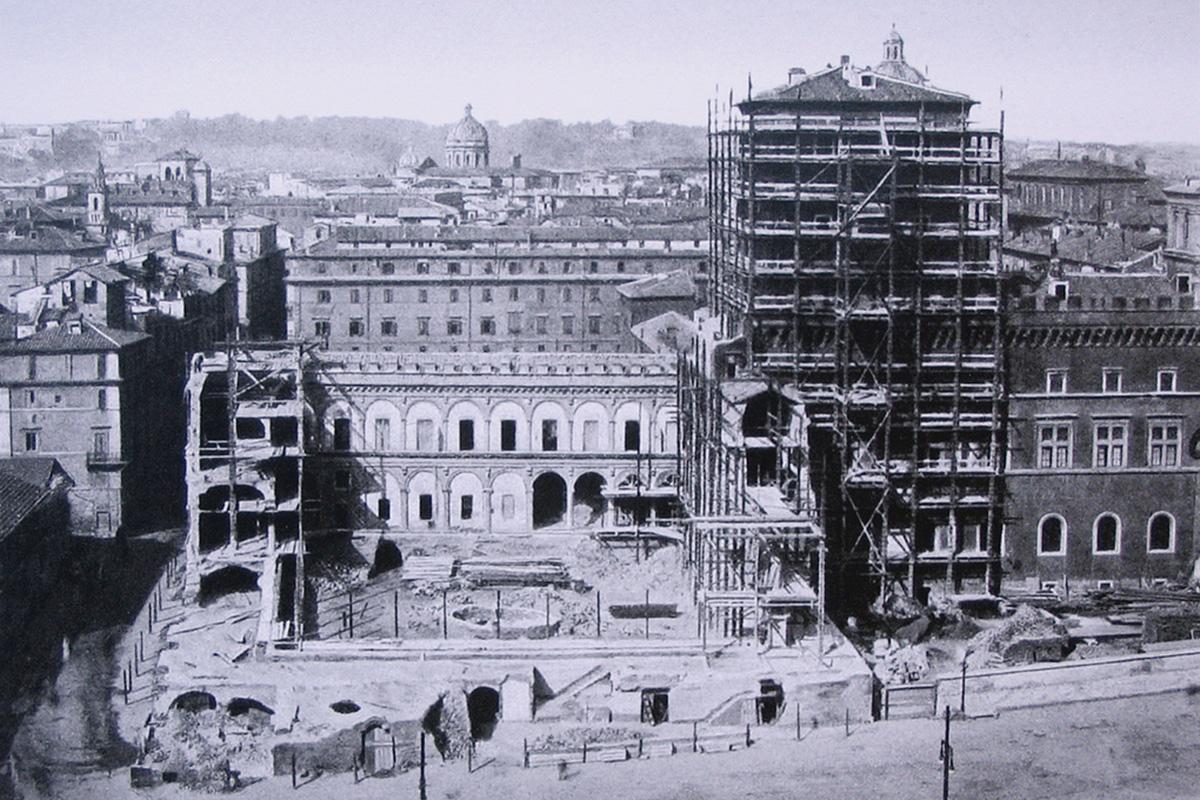Giuseppe Sacconi and the construction of the Vittoriano (1885-1905)
Giuseppe Sacconi was still quite young when he designed the Vittoriano, which clearly reflects the artistic merit and quality of this great artist.
Originally from Le Marche, Giuseppe Sacconi (1854-1905), had moved to Rome in 1874. Barely thirty, Sacconi won the second and decisive competition for the Vittoriano: his project was inspired by the classical and Renaissance tradition, particularly by the style of Donato Bramante.
In order to build the Vittoriano, it was necessary to demolish a large number of buildings that were in the area. Thus the three medieval cloisters of the Aracoeli Convent, the so-called Tower of Paul III and the overpass or 'passetto' connecting it with Palazzo Venezia, known as the Arch of San Marco disappeared
On 22nd March 1885, the ceremony for laying the first stone of the monument took place. The construction site soon encountered a series of considerable difficulties, connected to the instability of the foundation ground and to the discovery of some important finds, including a section of the Servian Walls, dating back to the sixth century BC: a profound overhaul of the original project was thus necessary.
Sacconi had initially thought of travertine, which was characteristic of many Roman buildings. In the end, however, Botticino marble was chosen, perhaps at the suggestion or imposition of the powerful minister Giuseppe Zanardelli (1826-1923). This material, which originates from quarries located near some towns close to Brescia, including Botticino, is known for its compactness and pure white colour.
Giuseppe Sacconi deeply believed in the unity of architecture and sculpture. He paid great attention to the choice of subjects and to that of the artists, providing them with drawings and even indications on the construction site. Under the direction of Sacconi, a large part of the architectural sculptures and the four sculptures at the top of the Doors were thus carried out, depicting The Politics, The Philosophy, The Revolution and The War.
In 1884, in open contrast to Sacconi's will, the Royal Commission appointed by the Government to supervise the work of the Vittoriano, separated the statue of the King from the overall construction site, for which it launched a special competition. After a series of vicissitudes, in 1889 the victory went to the Friulian sculptor Enrico Chiaradia (1851-1901).
Sacconi, who was already hostile to the idea of separating the statue of the King from the overall construction site, thus losing control, declared himself against the outcome of the competition: Chiaradia's realistic style was in his opinion incompatible with the classicist and Neo-Renaissance structure of the Vittoriano. After Chiaradia died in 1901, the statue of the king on horseback was finished by the Florentine sculptor Emilio Gallori (1846-1924).
In 1890, on the occasion of the visit of Umberto I (1878-1900) to the construction site, Sacconi de facto presented a new project, which took into account the need to consolidate the grounds and to preserve the "Walls of the Kings", that is to say a stretch of the Servian walls dating back to the 6th century BC.
The architect first of all envisaged massive substructures to keep the building standing: this would create large interior spaces ideal for housing museums: of the Crowns on the ground floor, of the Risorgimento and of the Shrine of the Flags. He also enlarged the monumental portico from 90 to 114 metres. This type of modifications had a considerable impact on the costs of the structure, which rose from the 9 million lire expected to 26.5.
At the same time, Sacconi moved towards a new iconography of the decorative apparatus. He abandoned the historical subjects which he had envisaged in the first project and turned more and more decisively towards allegories.
In this context, Giuseppe Sacconi inserted an Altar of the Fatherland in the Vittoriano. The architect destined the central area of the Monument on the first terrace, below the statue of Victor Emanuel II on horseback, to a large votive altar dedicated to the Italian nation.
The enlargement of the portico had led to an enlargement of the overall dimensions of the Vittoriano. In this new layout, the Monument was no longer fully visible to those arriving from Via del Corso. Sacconi therefore urgently felt the need to completely rethink the relationship with the area in front of it.
In 1897, Sacconi presented a complete project for Piazza Venezia, based on a rigidly symmetrical criterion: it involved moving the so-called Palazzetto di Piazza Venezia, the destruction of Palazzo Torlonia and the construction of a new building similar to Palazzo Venezia in a set back position.

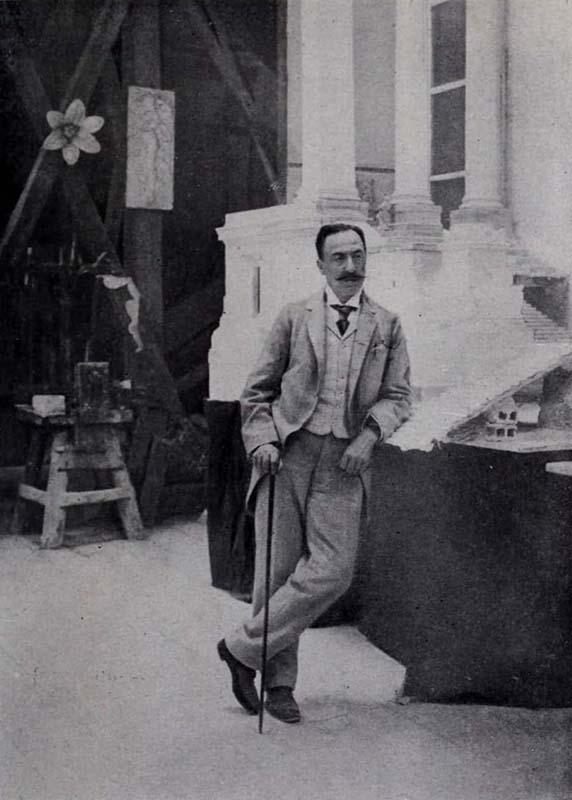
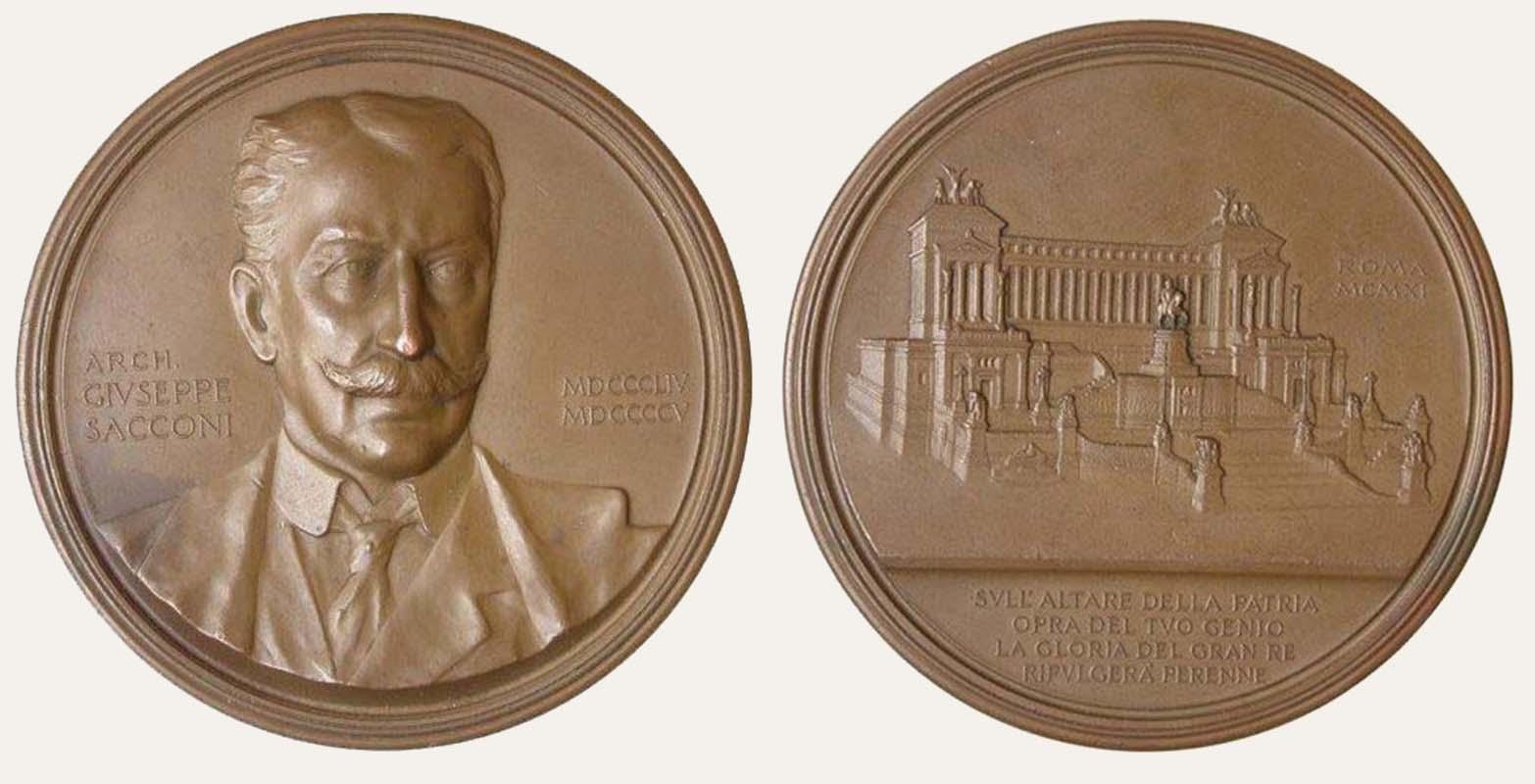
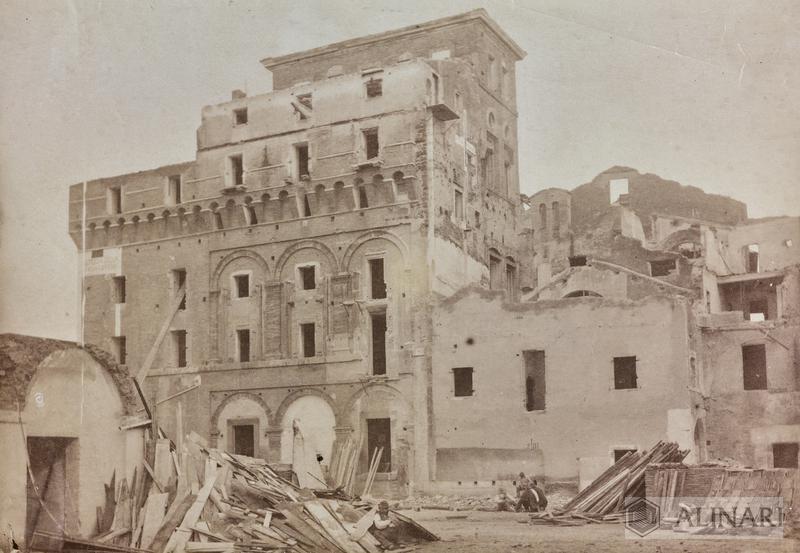
![Torre di Paolo III [Tower of Paul III] at the Campidoglio in the process of being demolished during refurbishment of the Piazza Venezia area on the occasion of construction of the Vittoriano in Rome](https://vive.cultura.gov.it/_cms/sites/default/files/styles/original/public/el-img-testo/3_b3.jpeg?itok=rUidt7rB)
